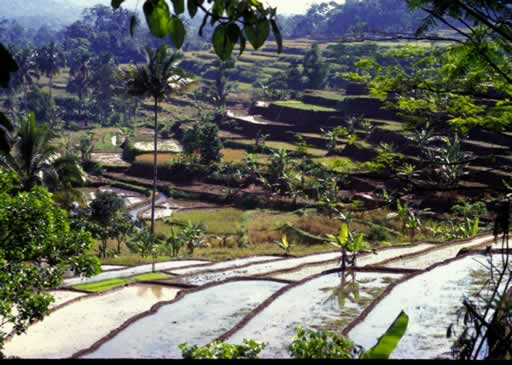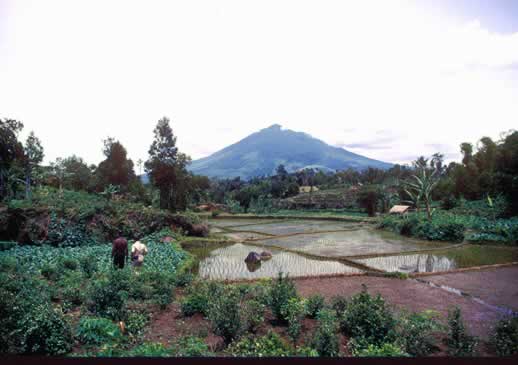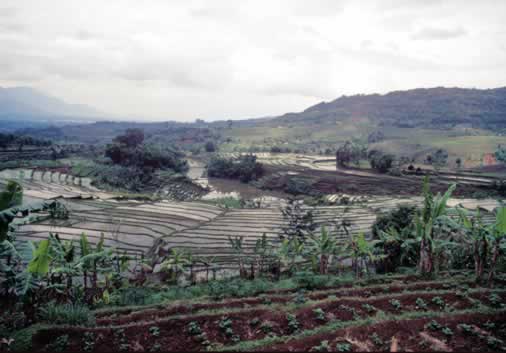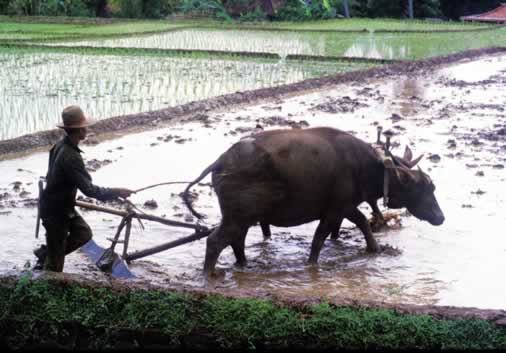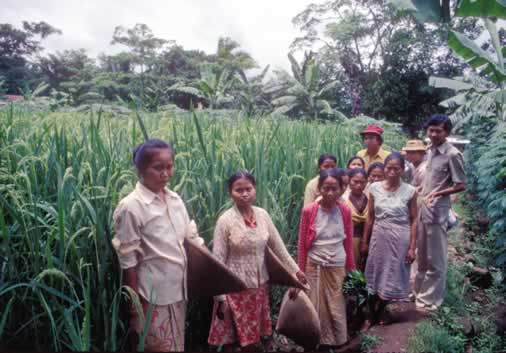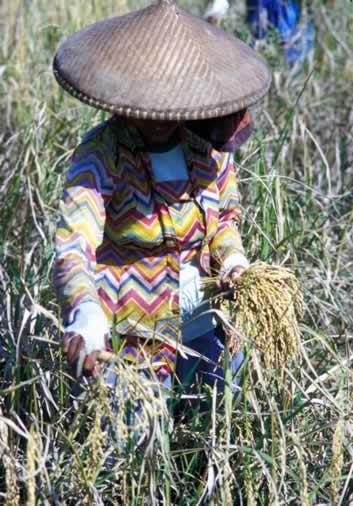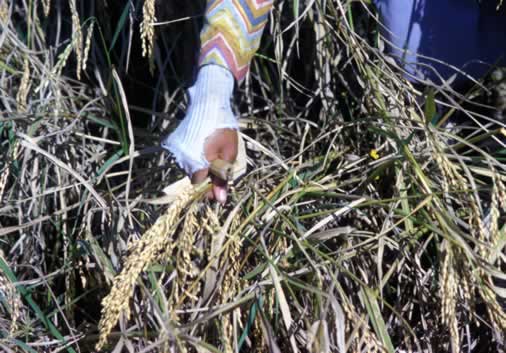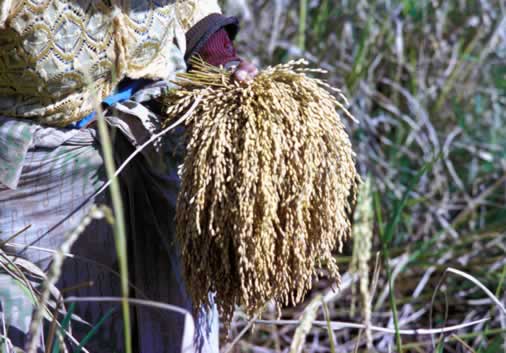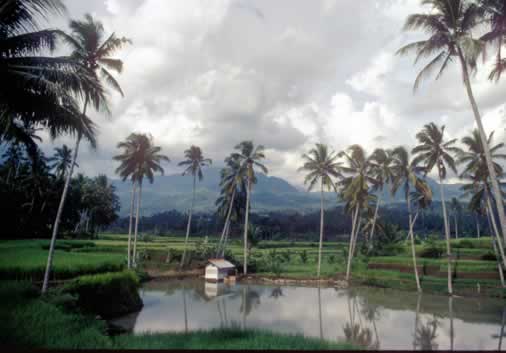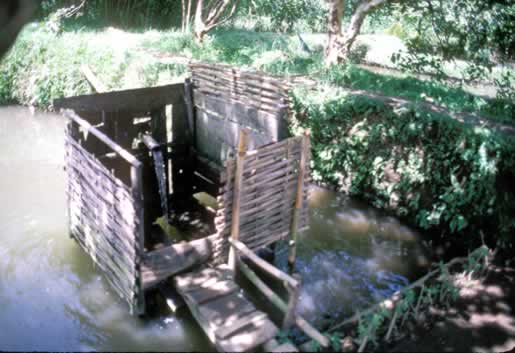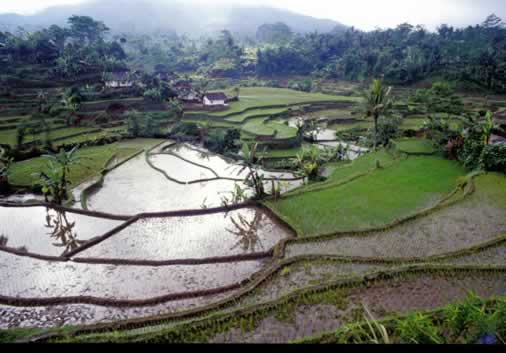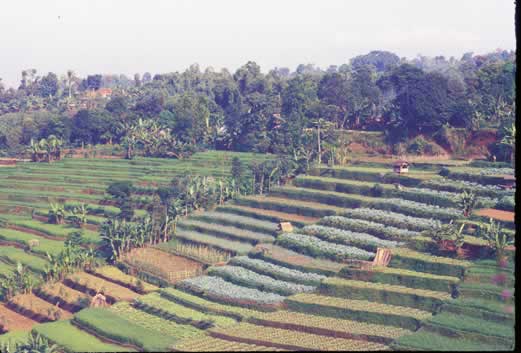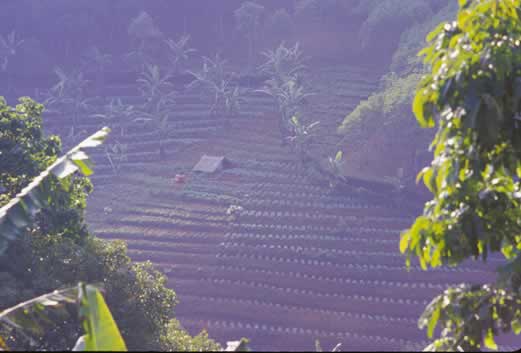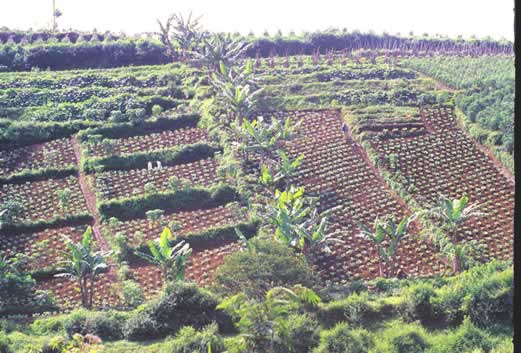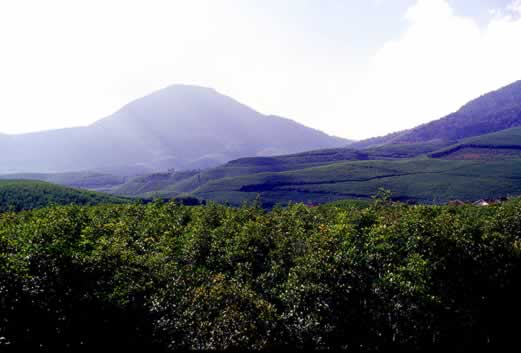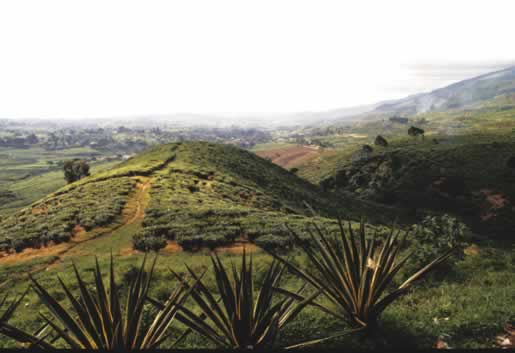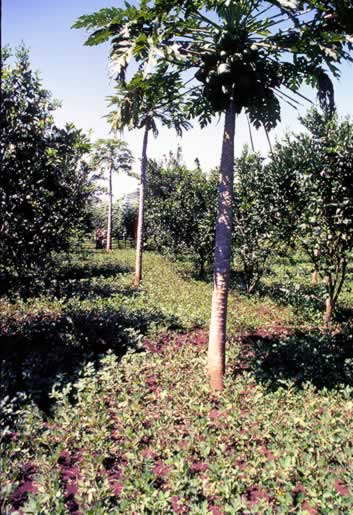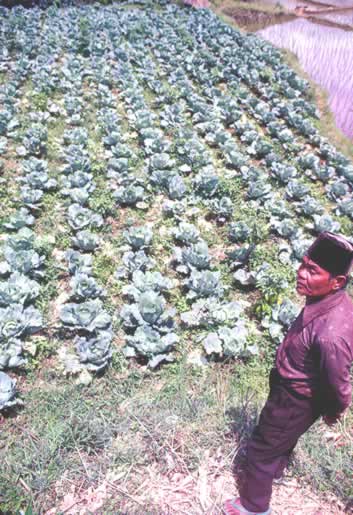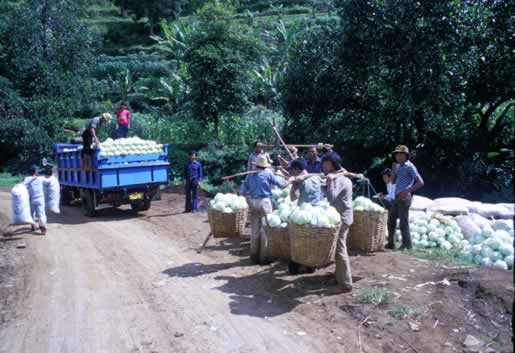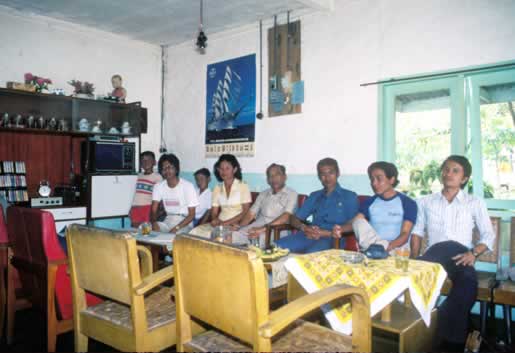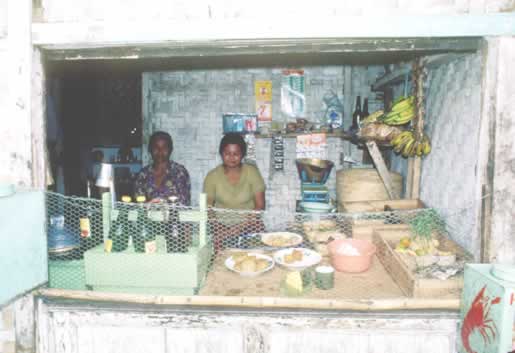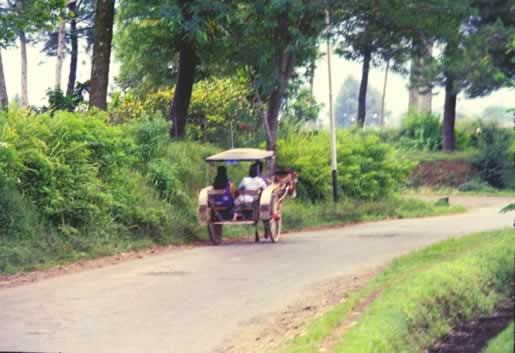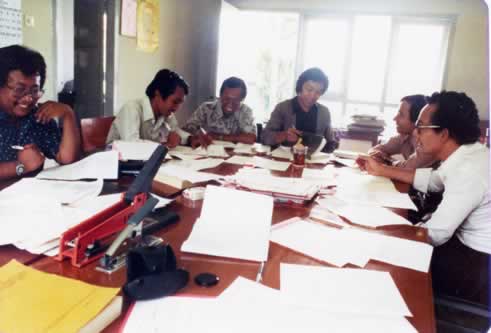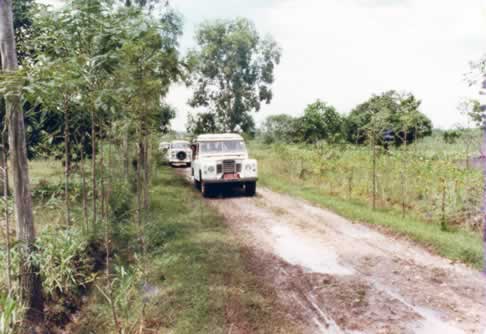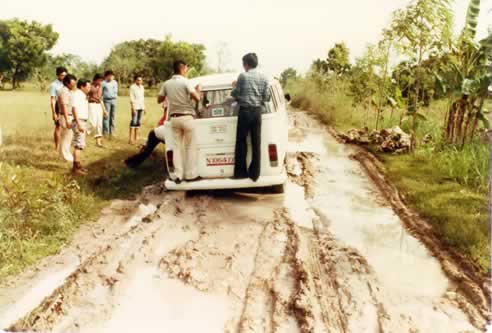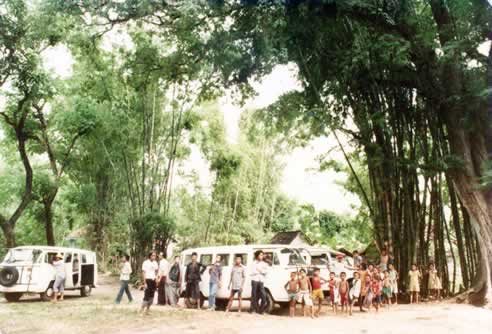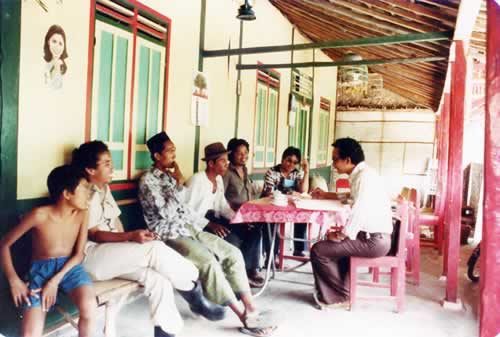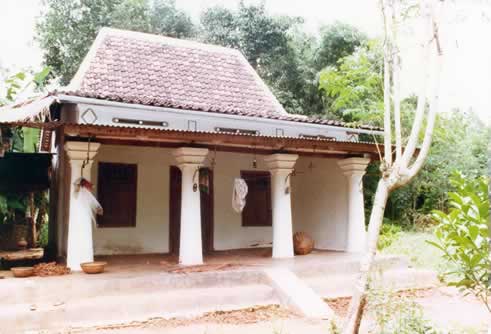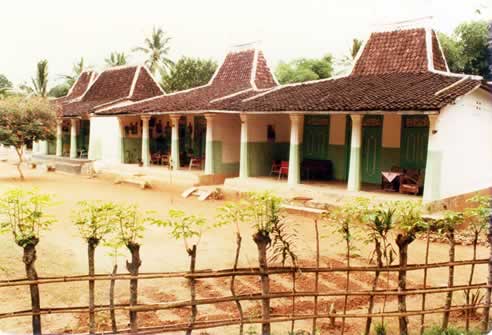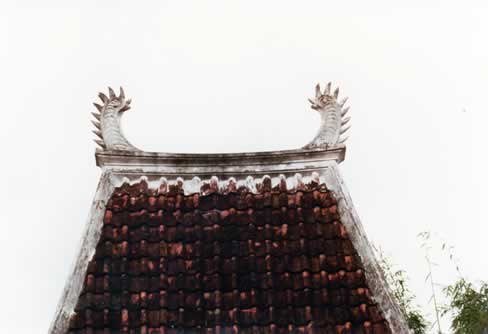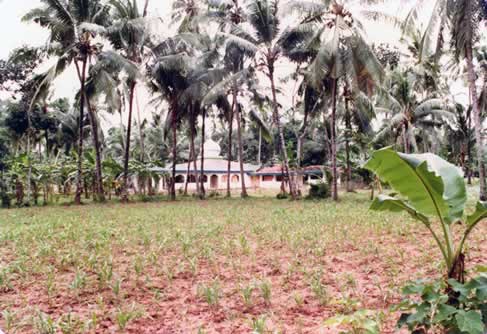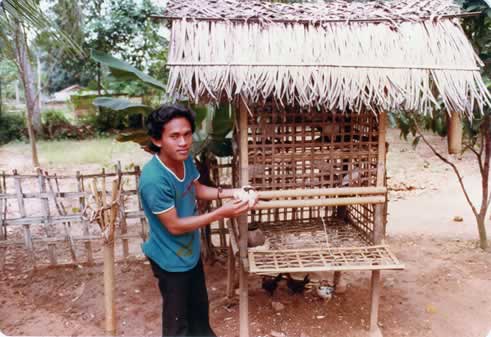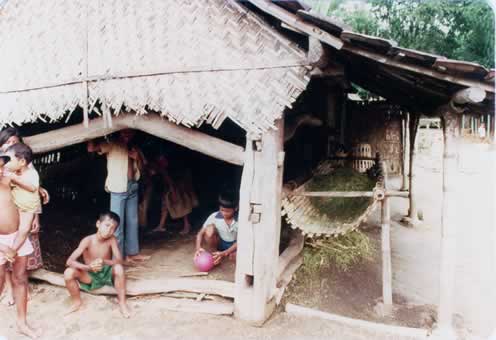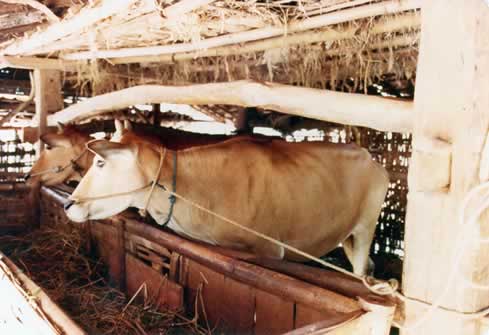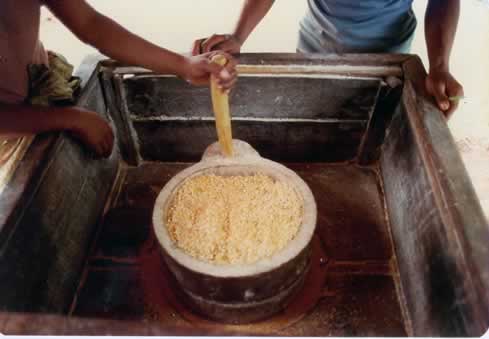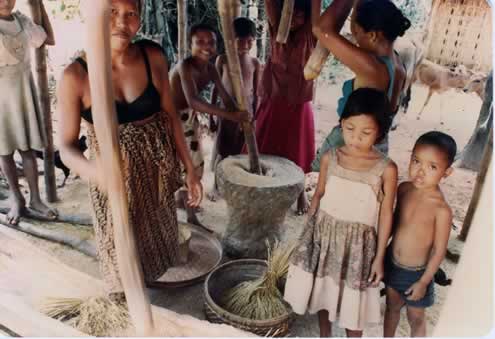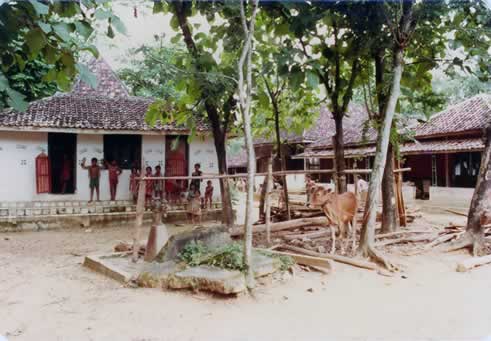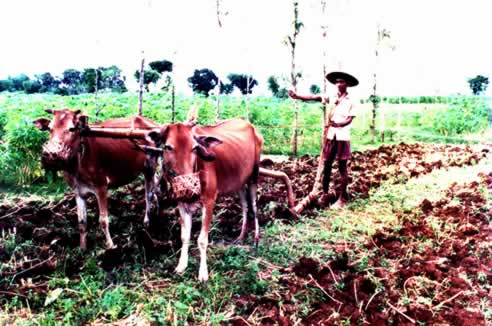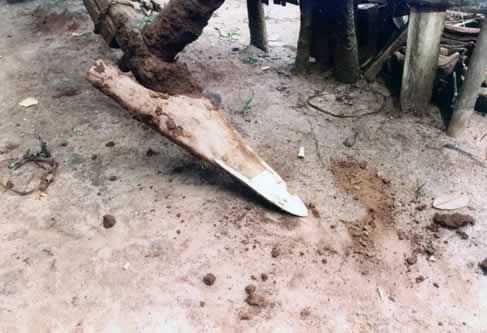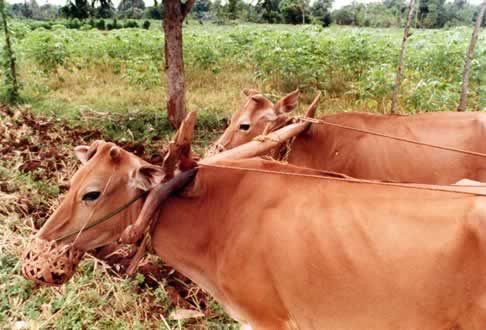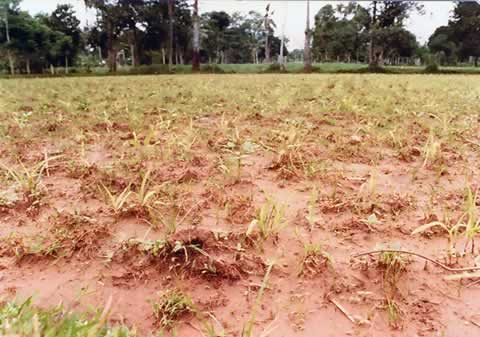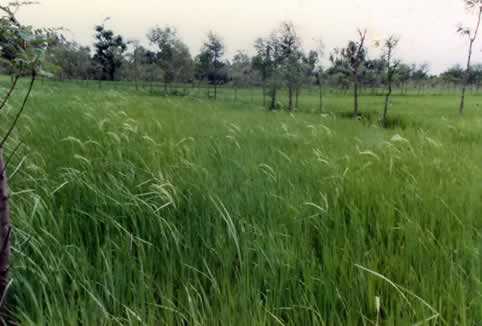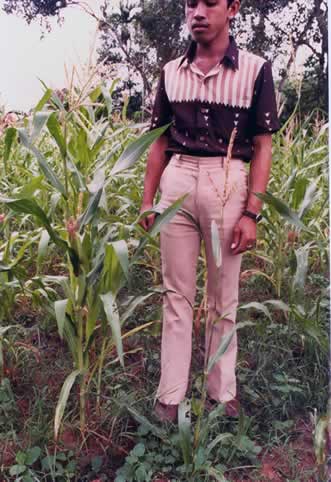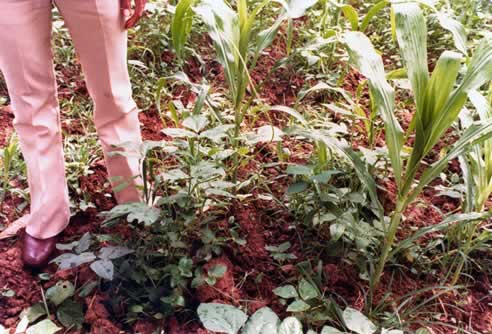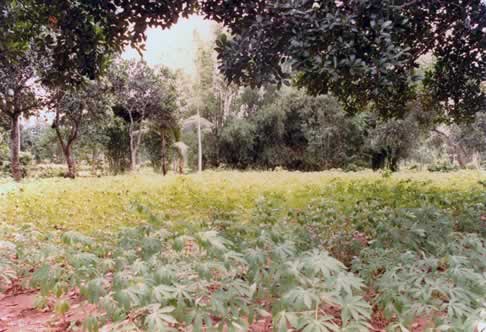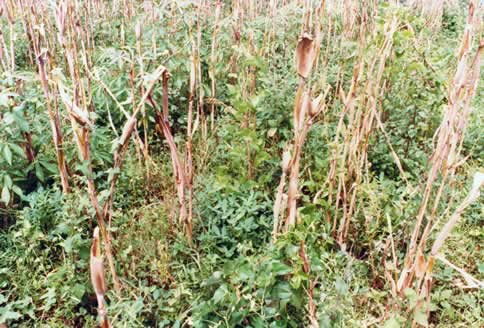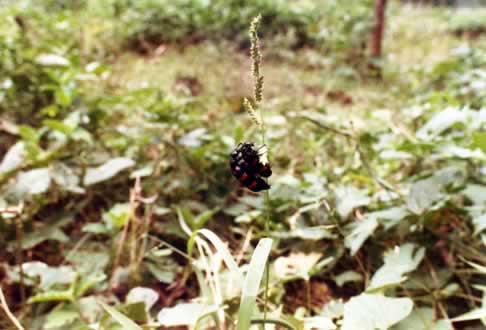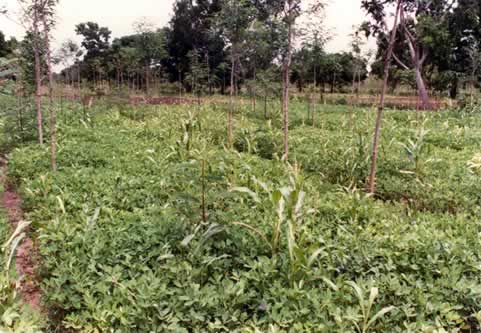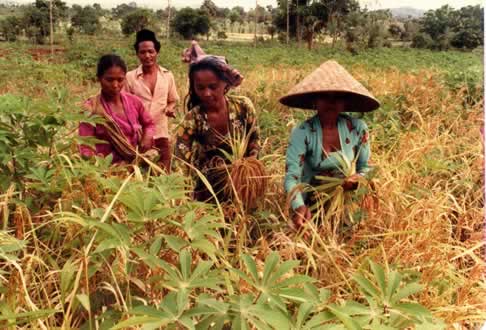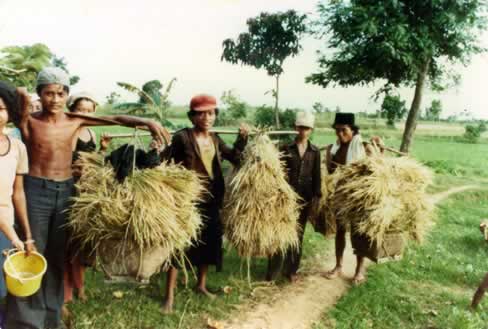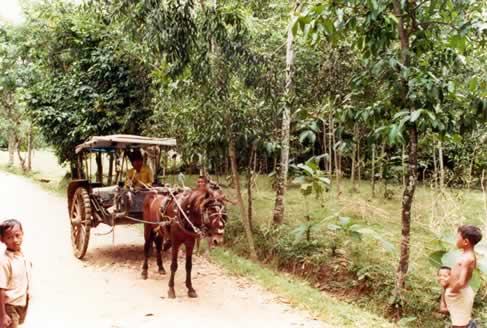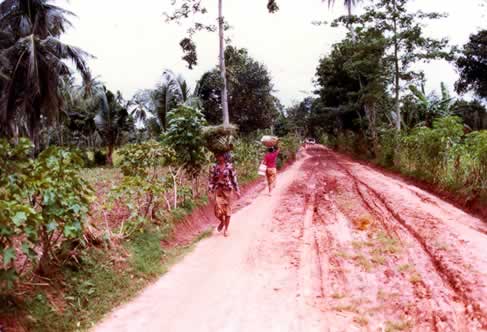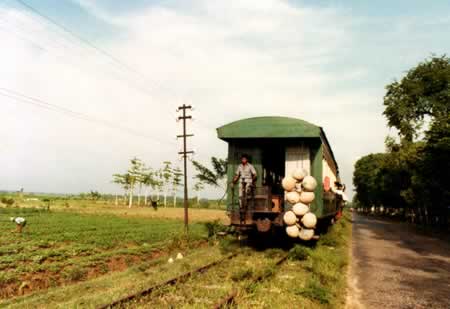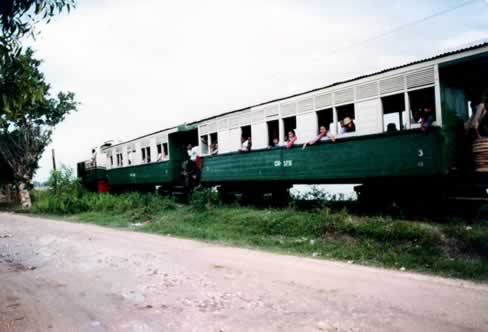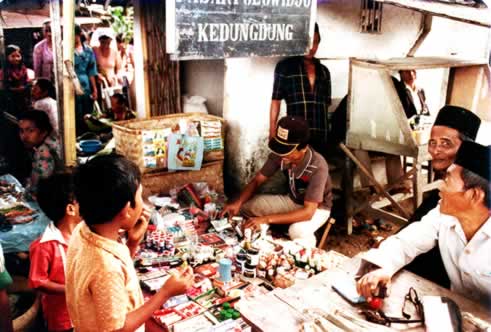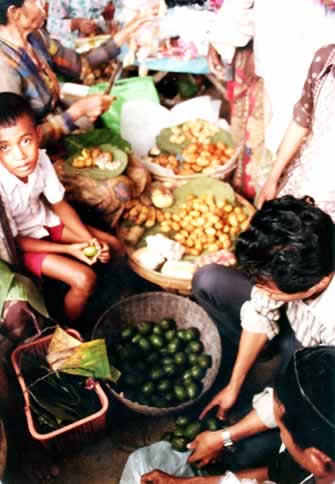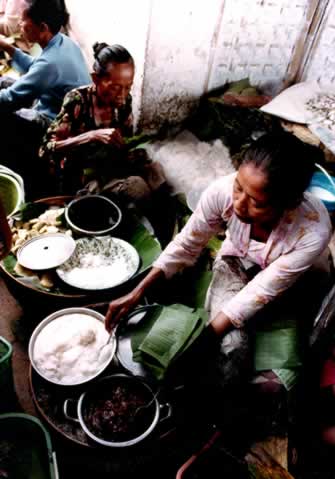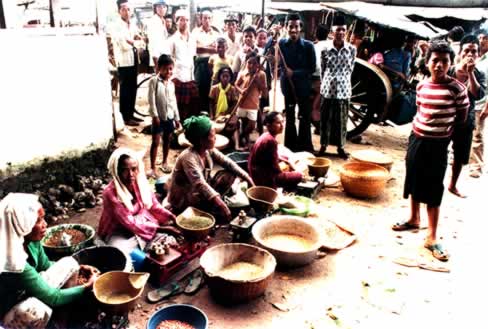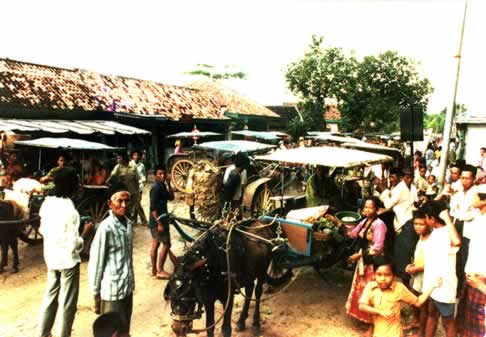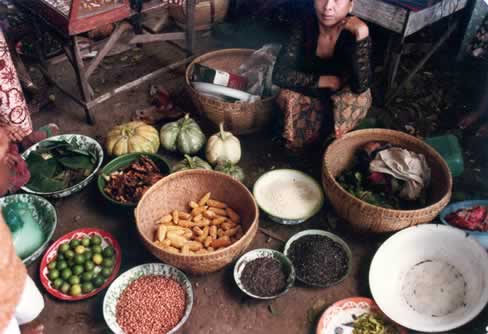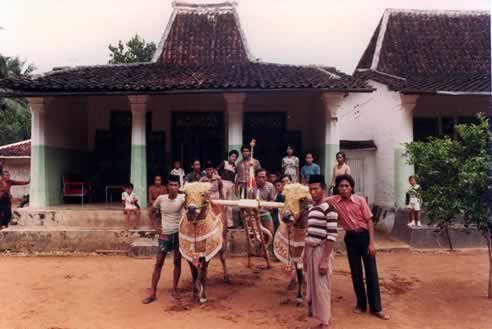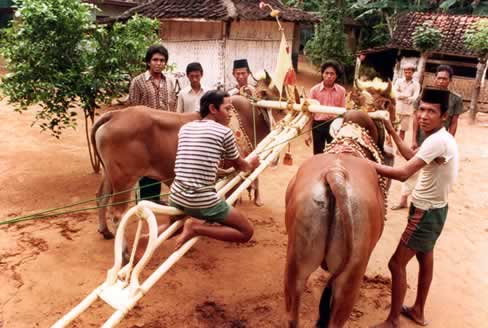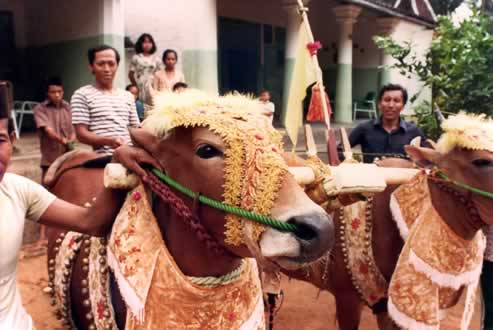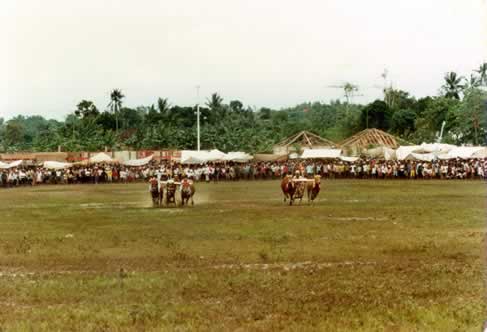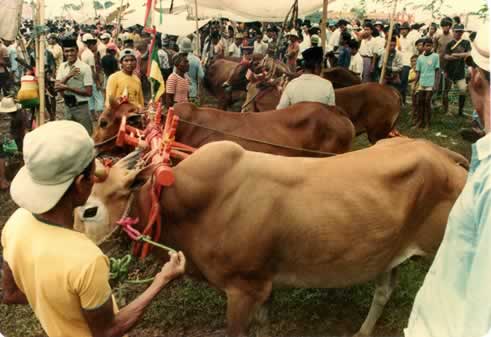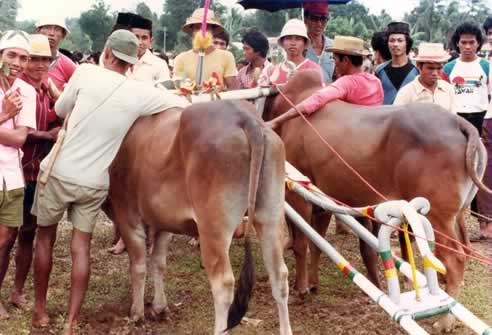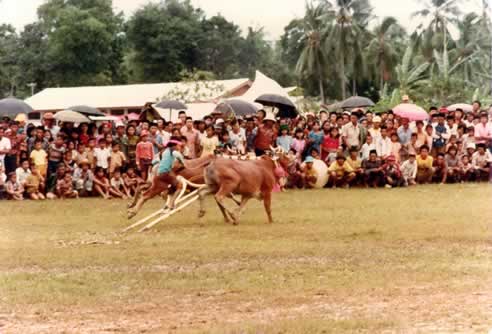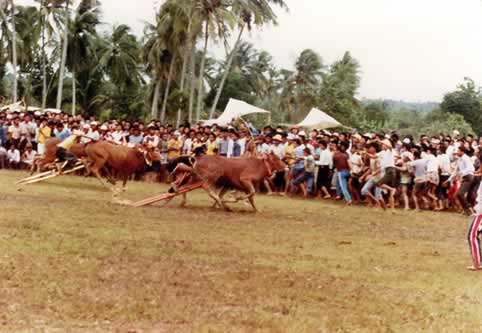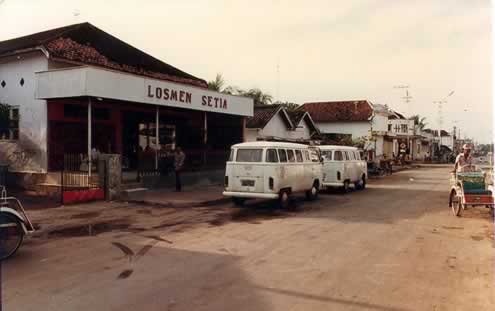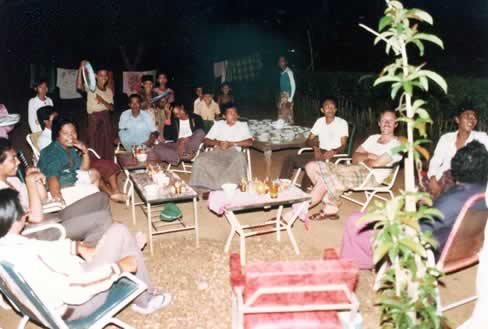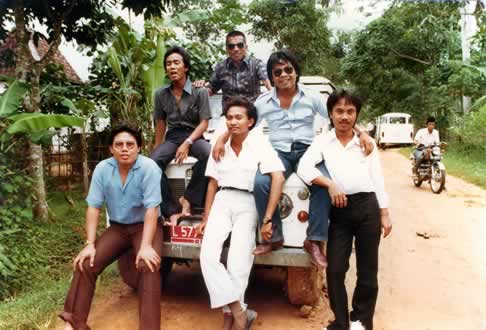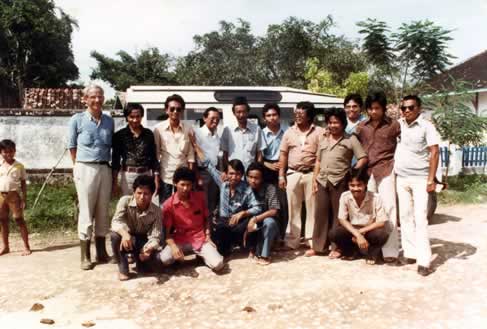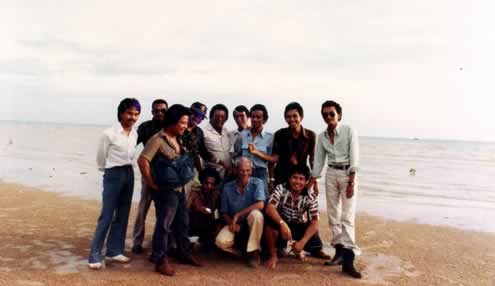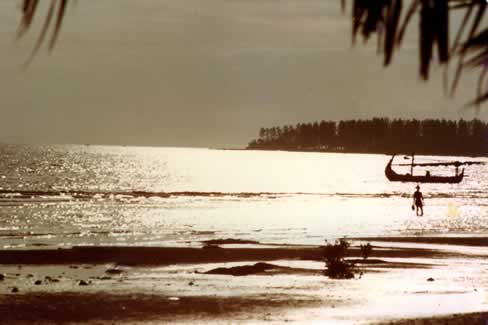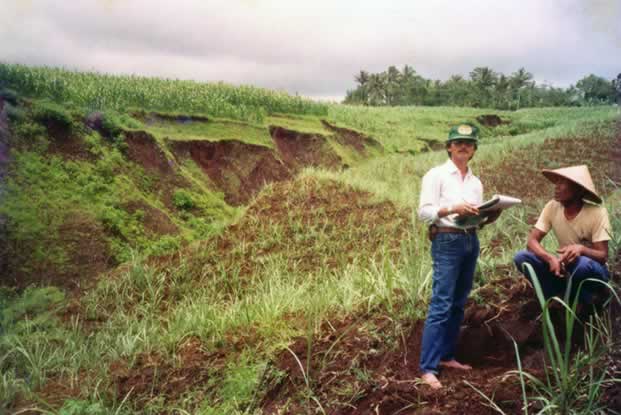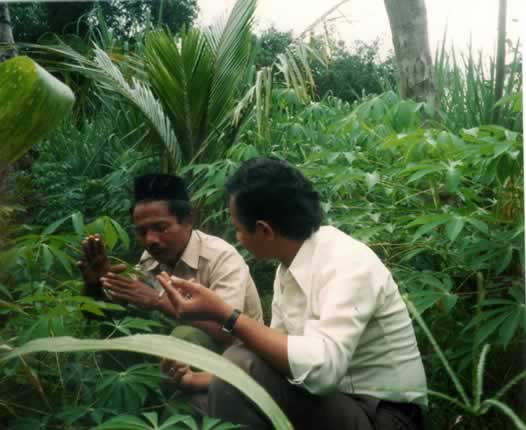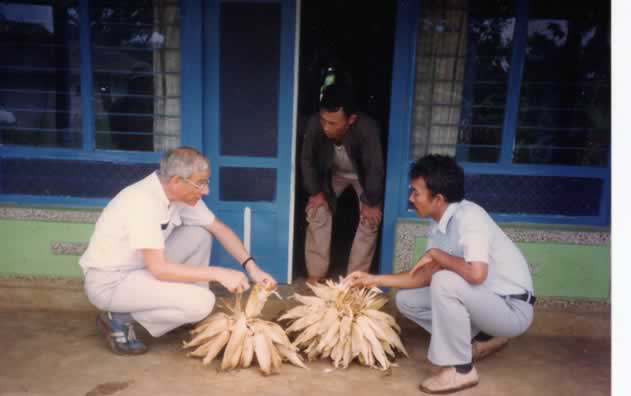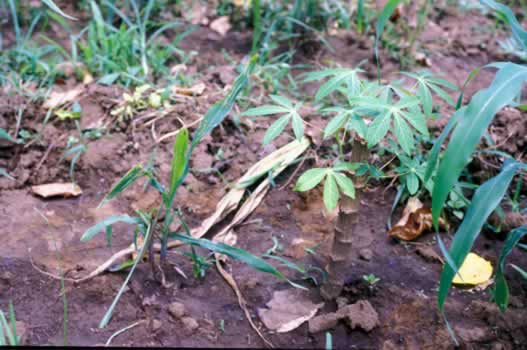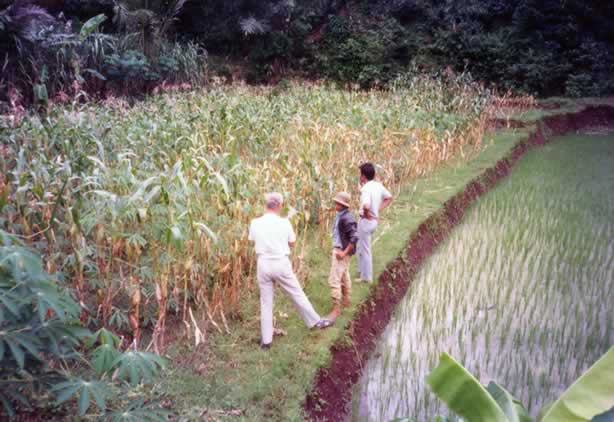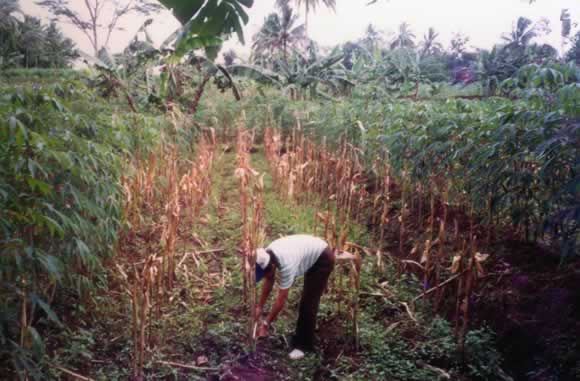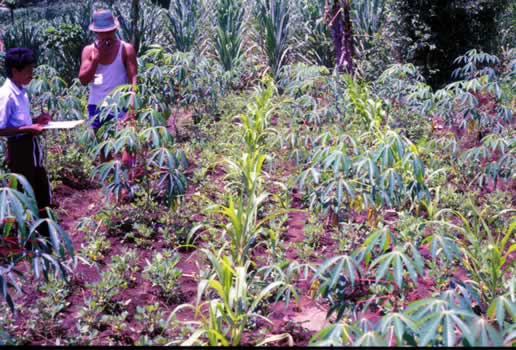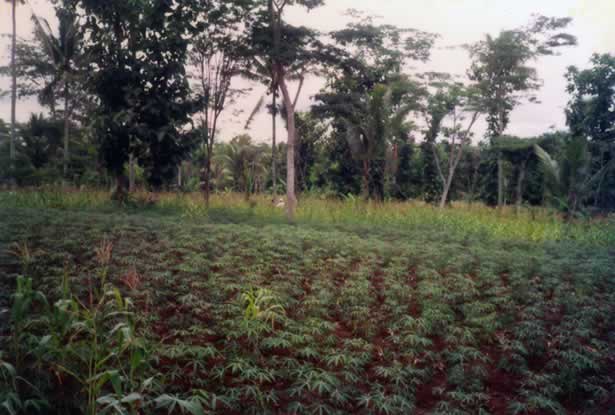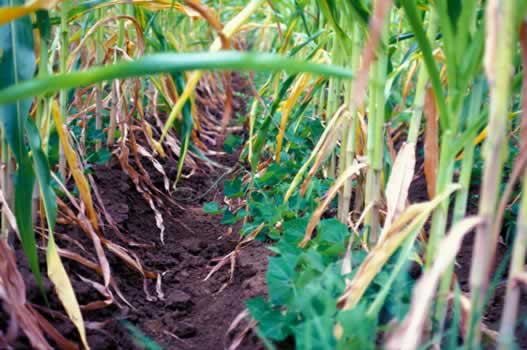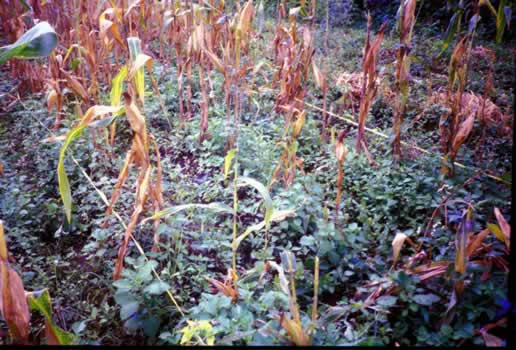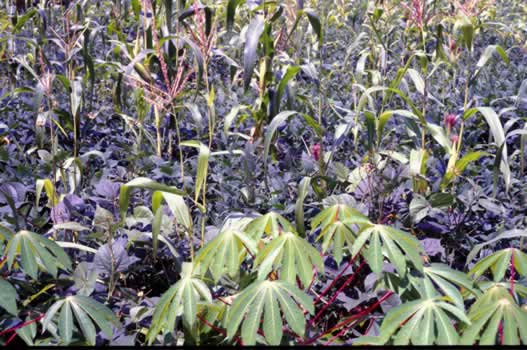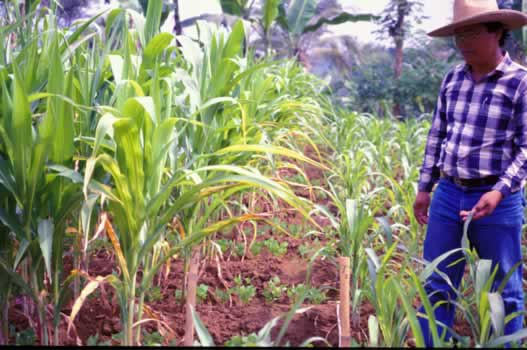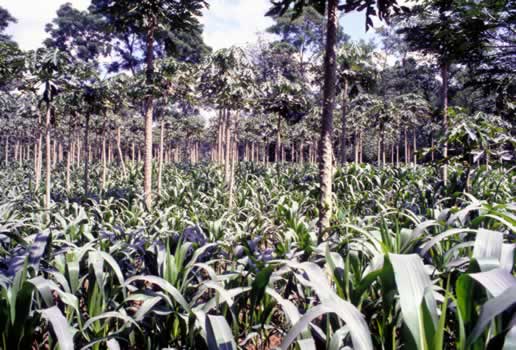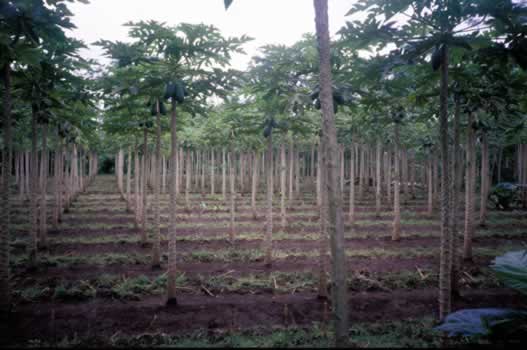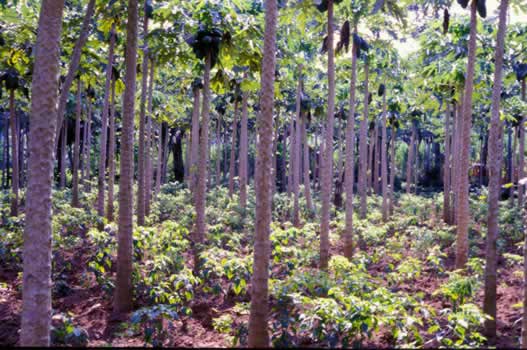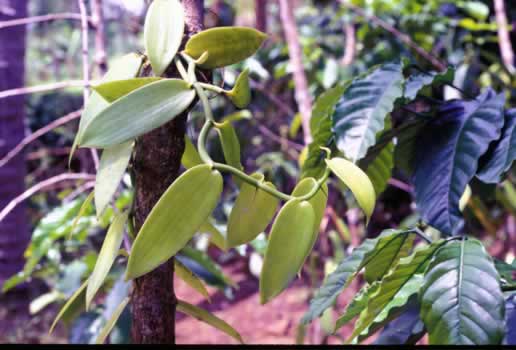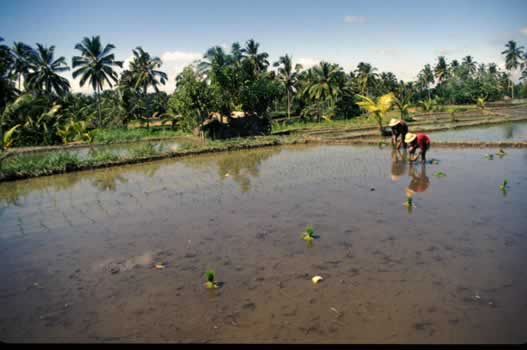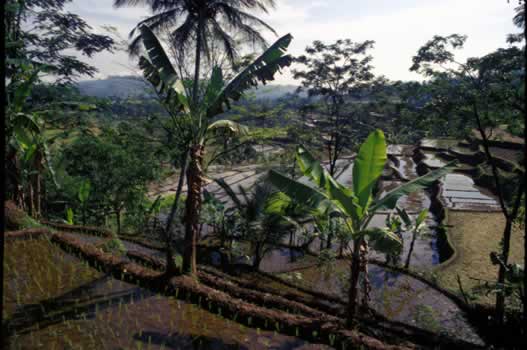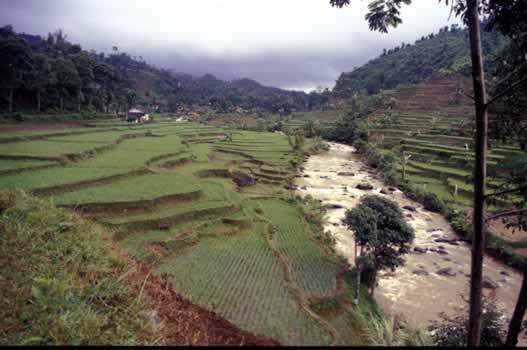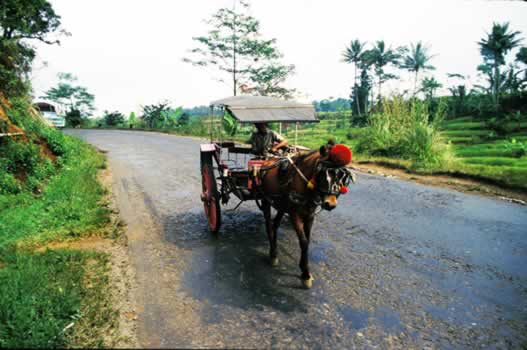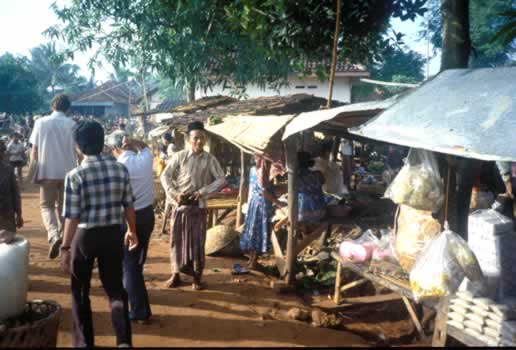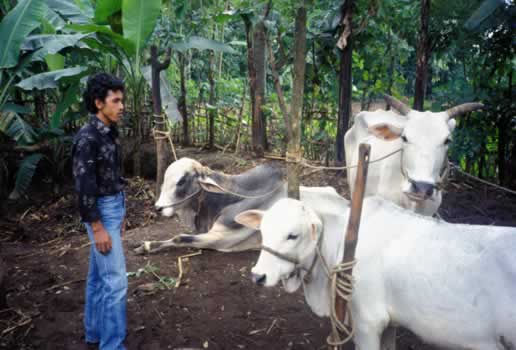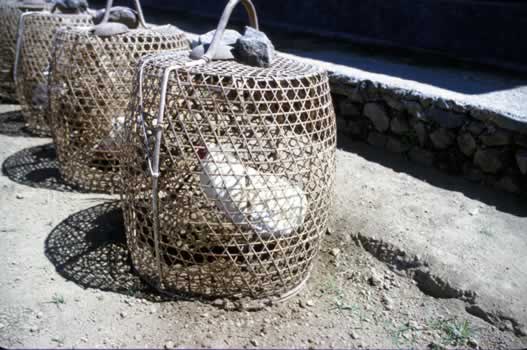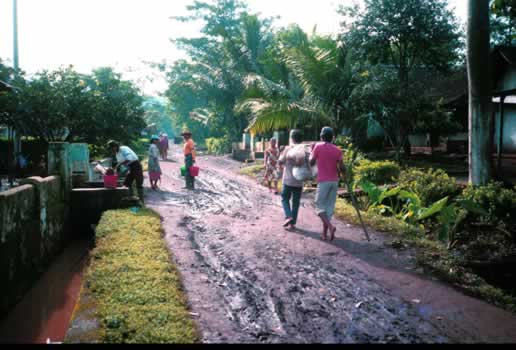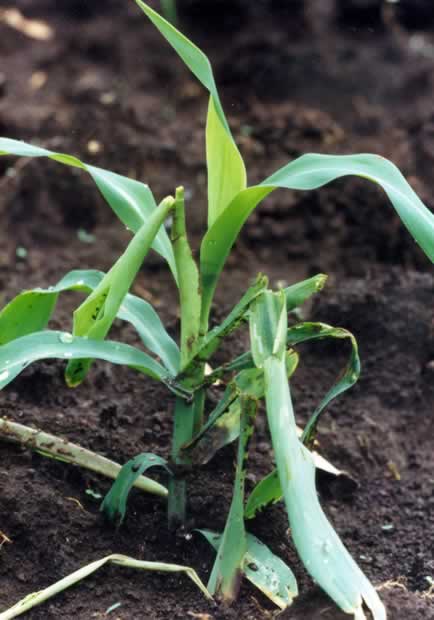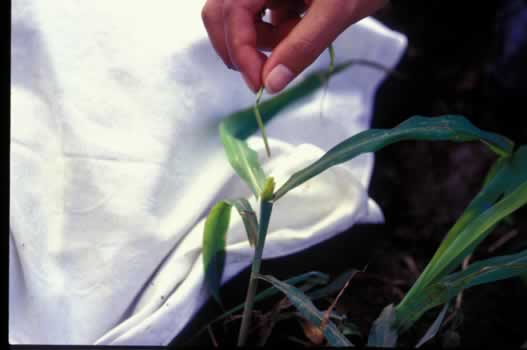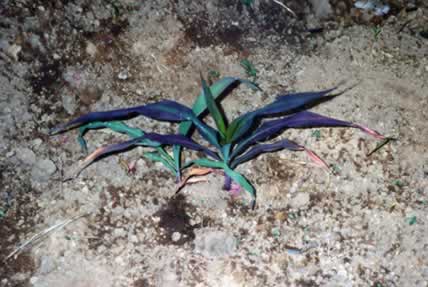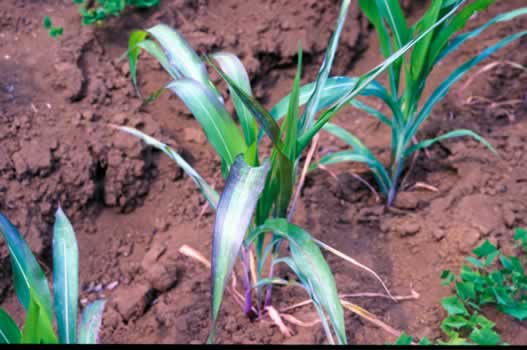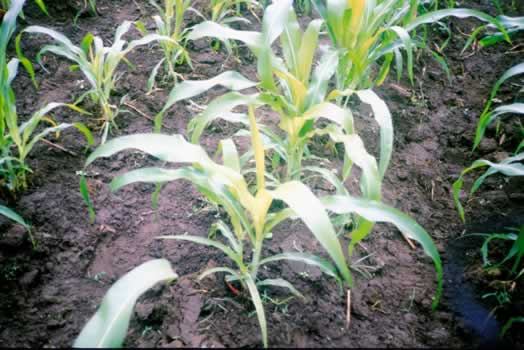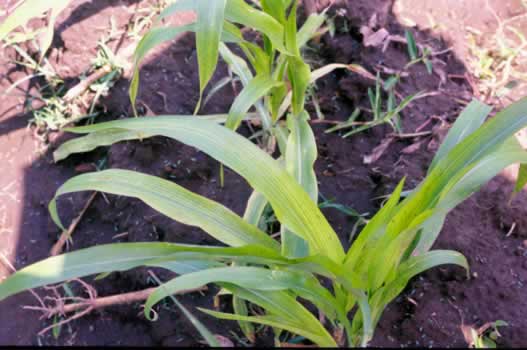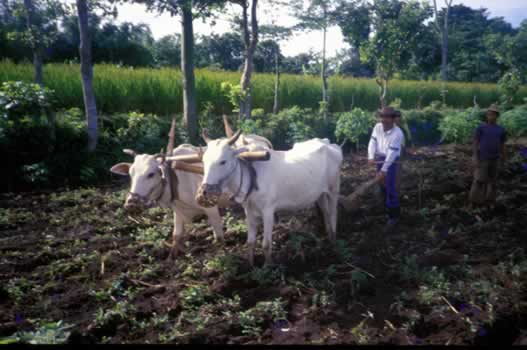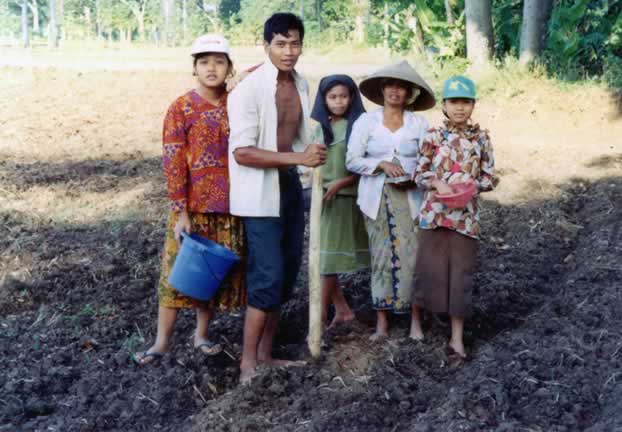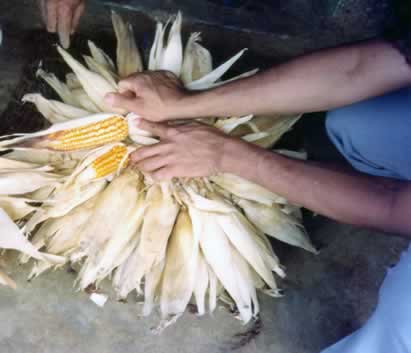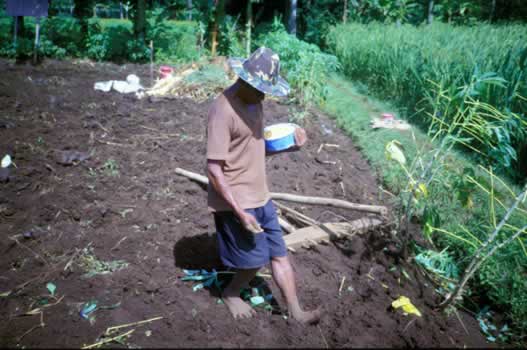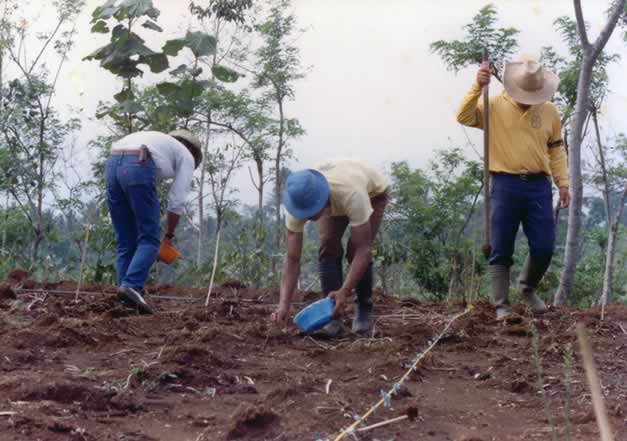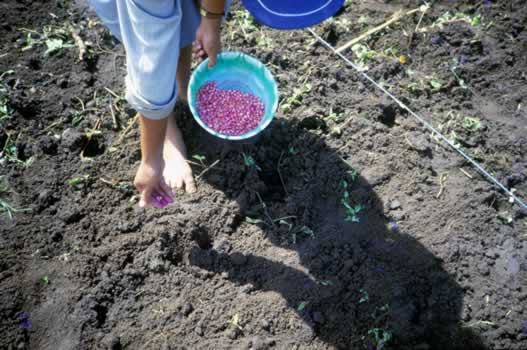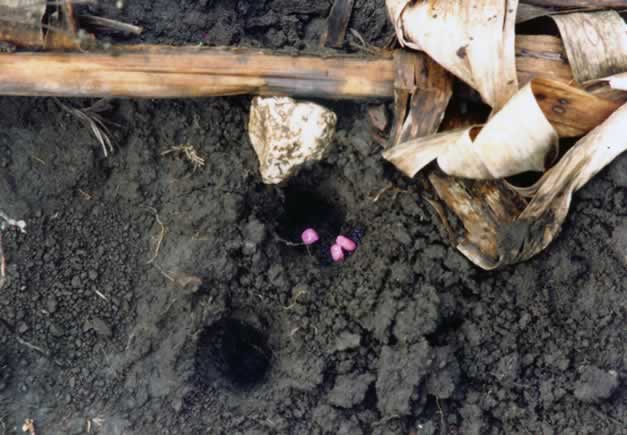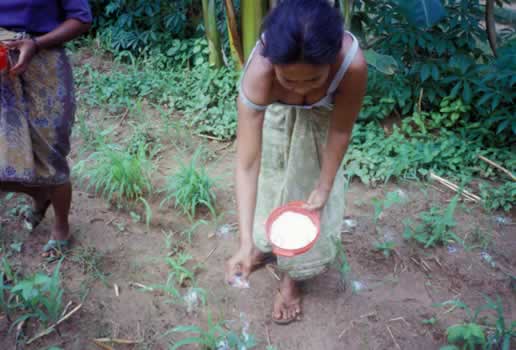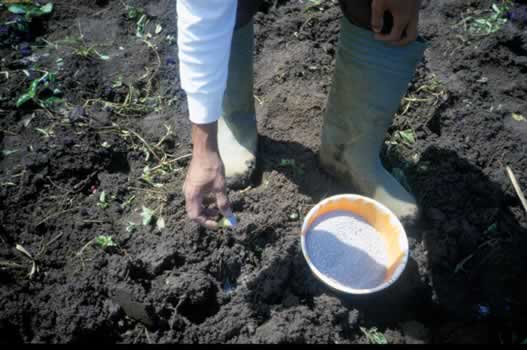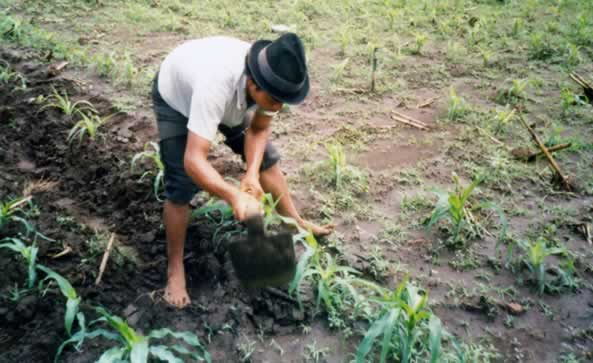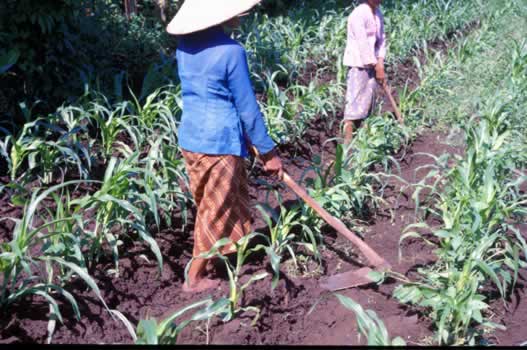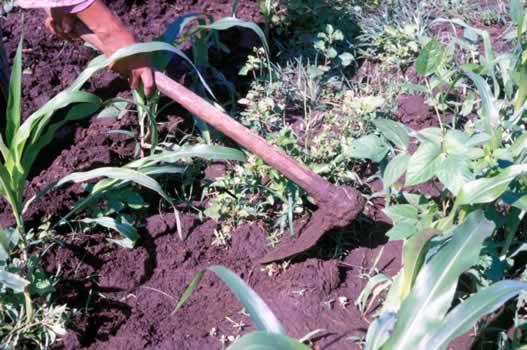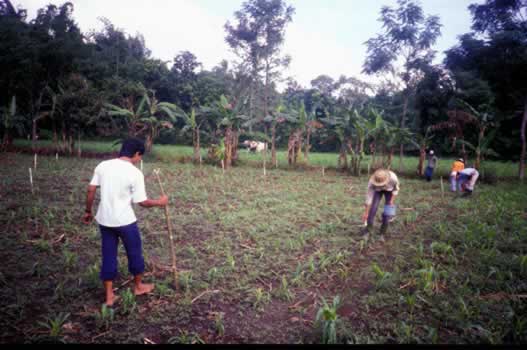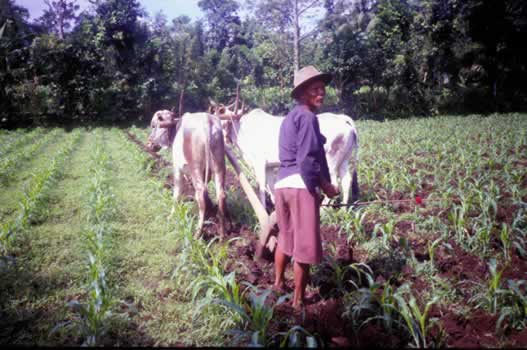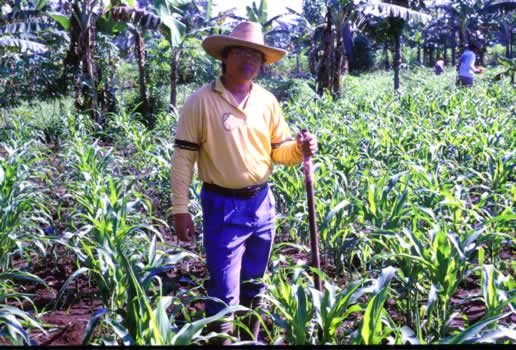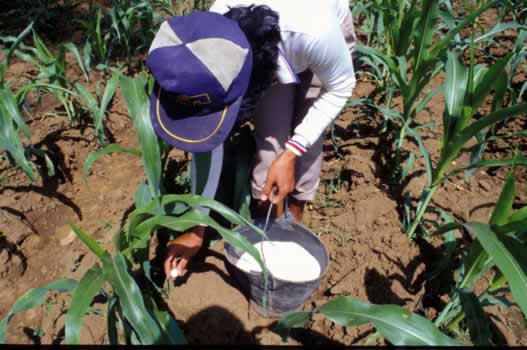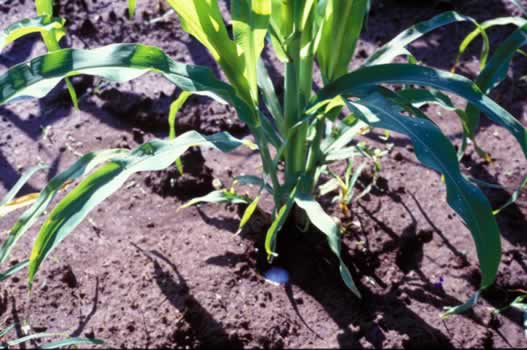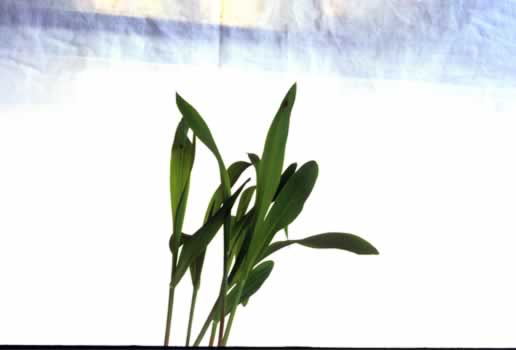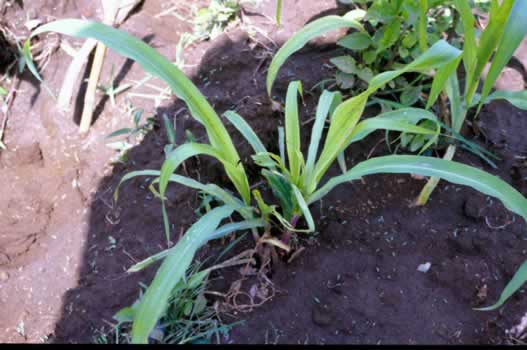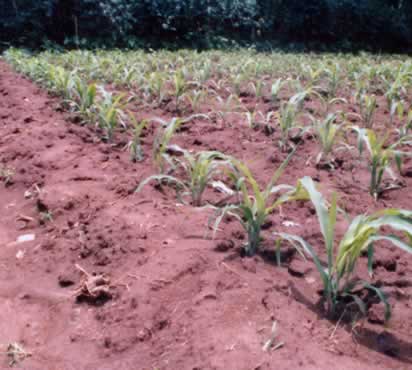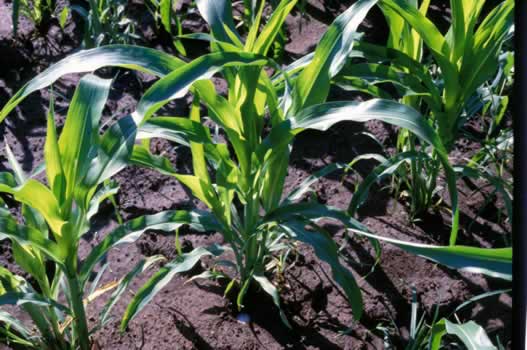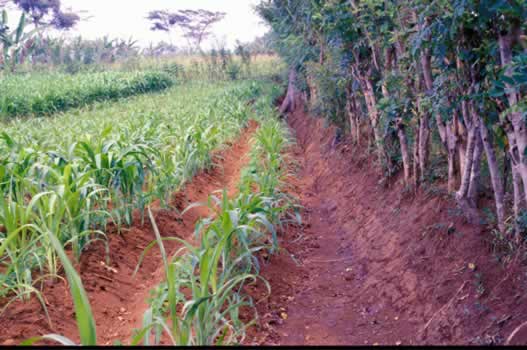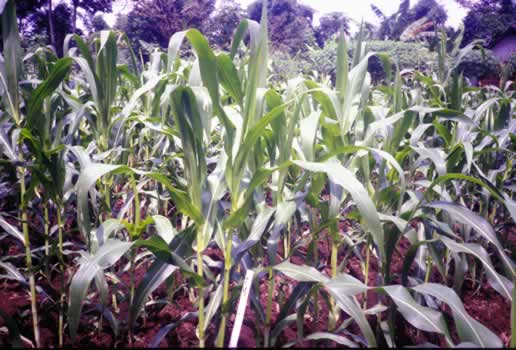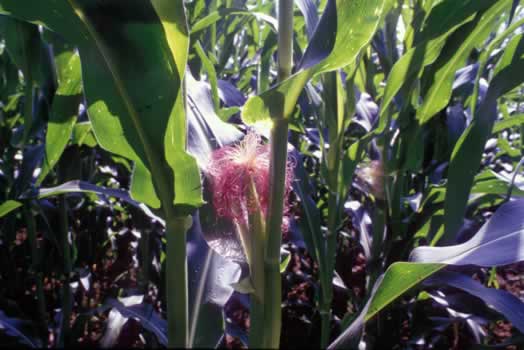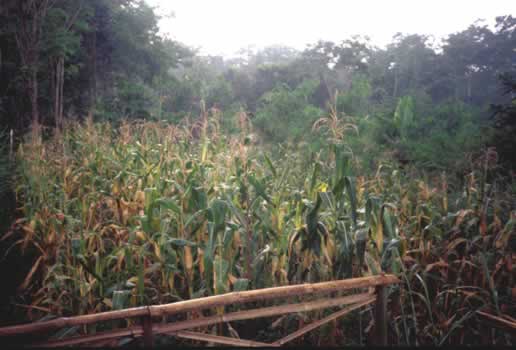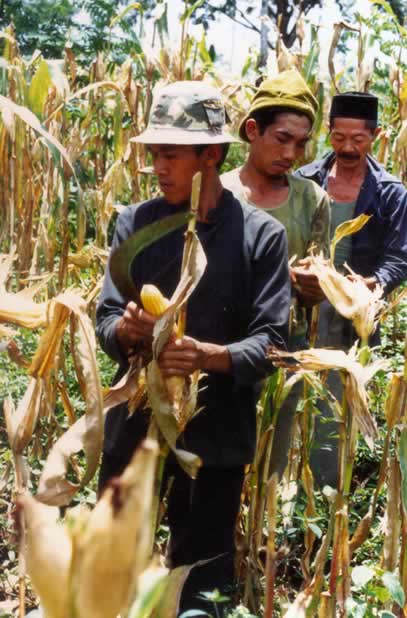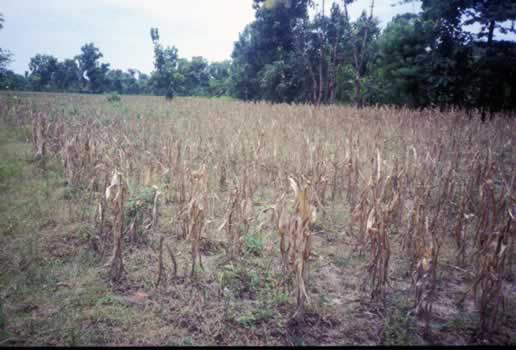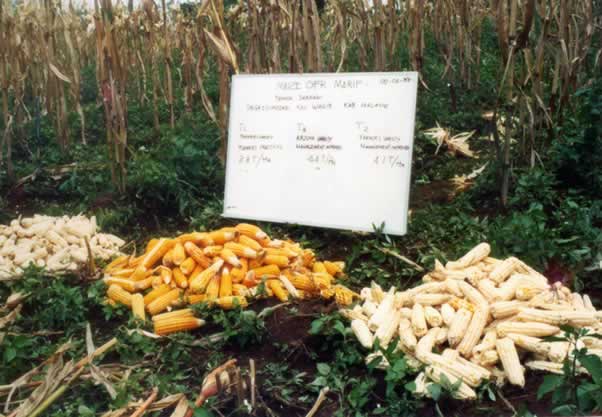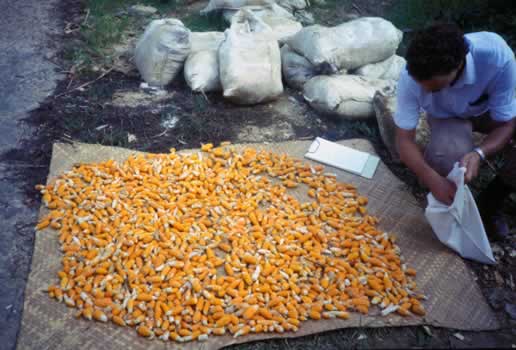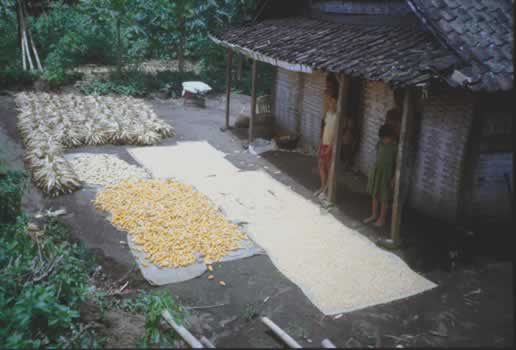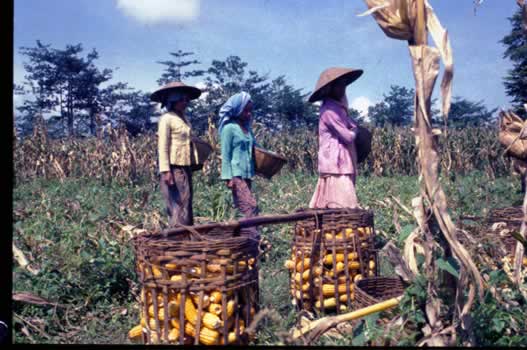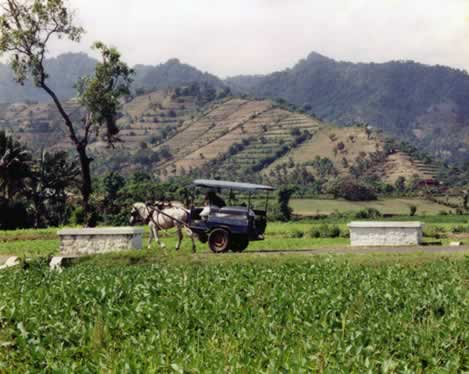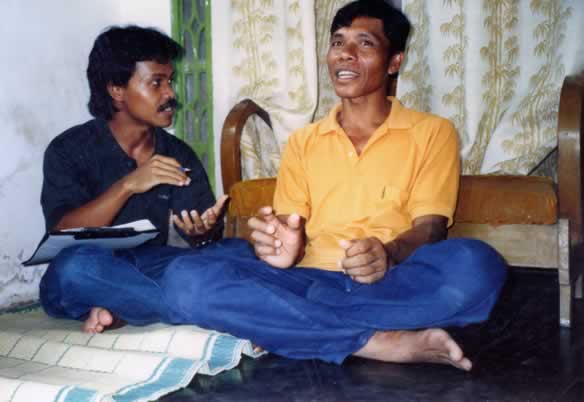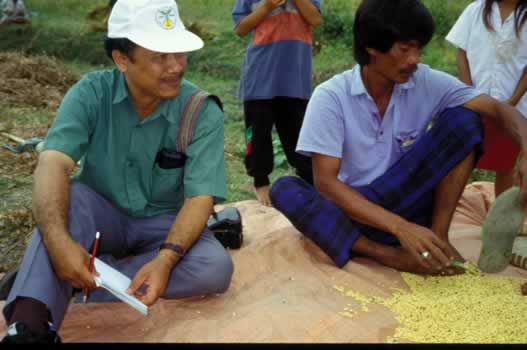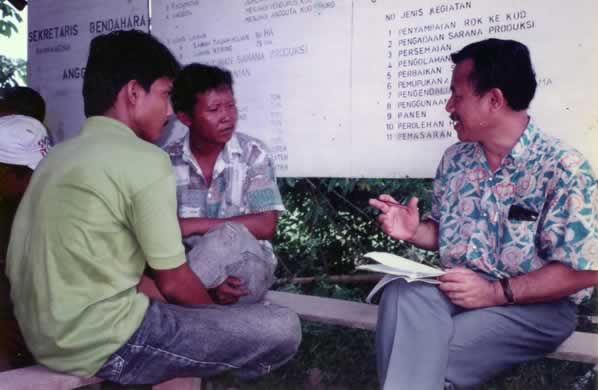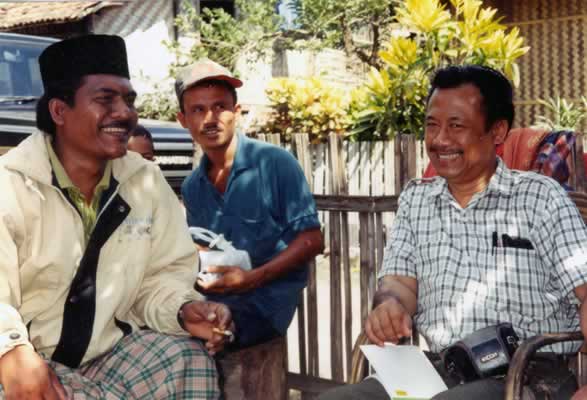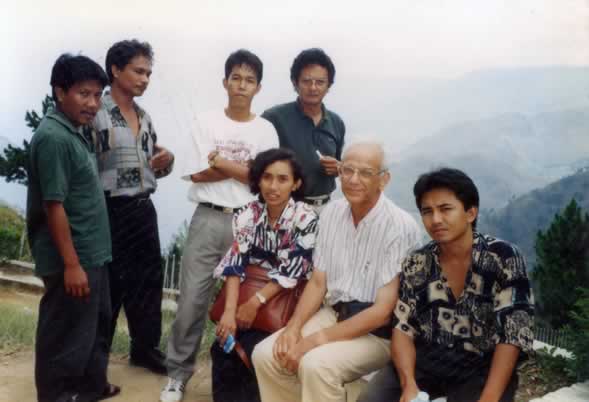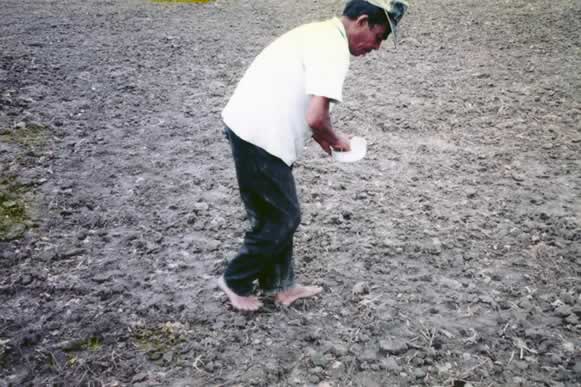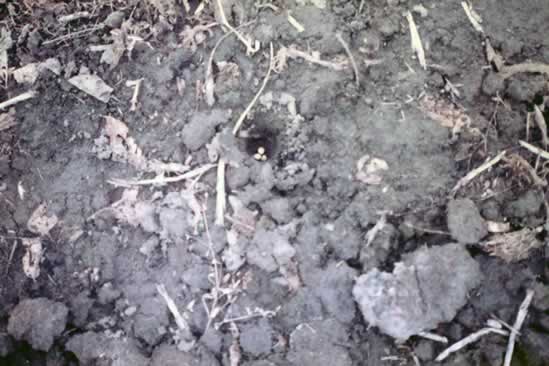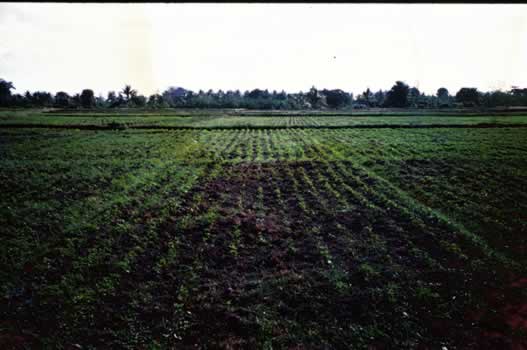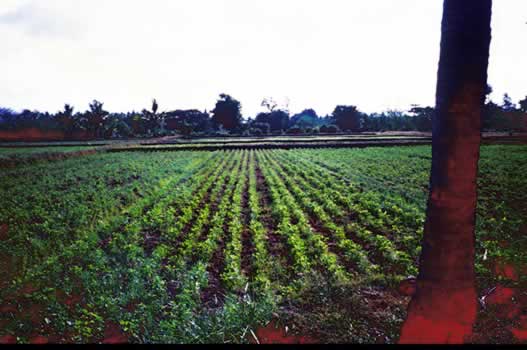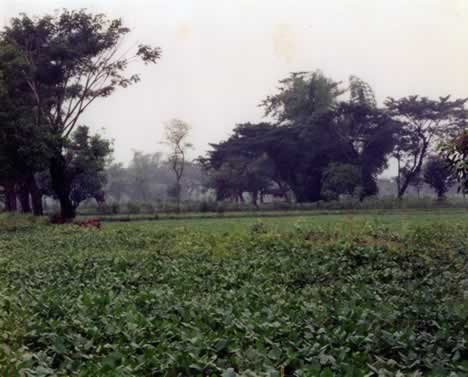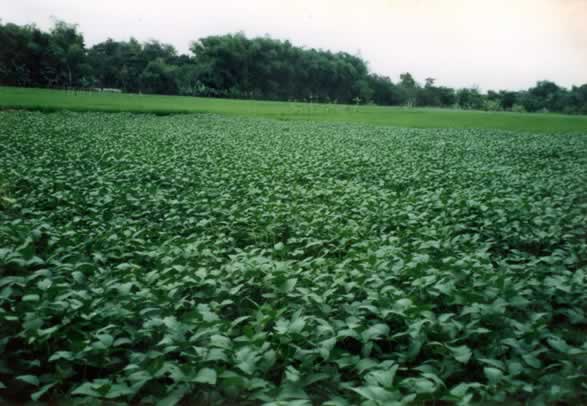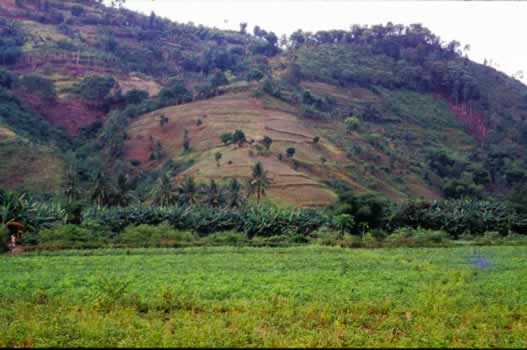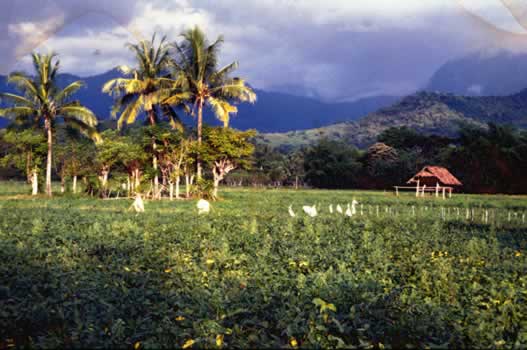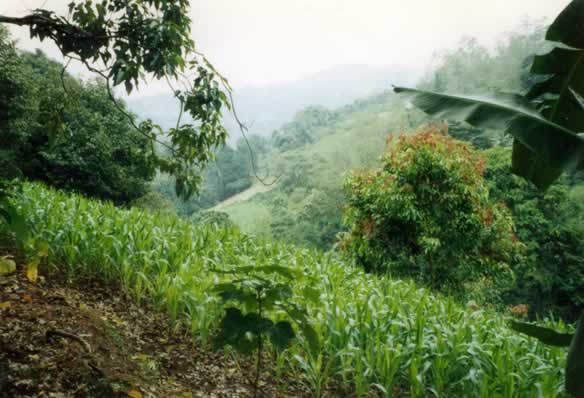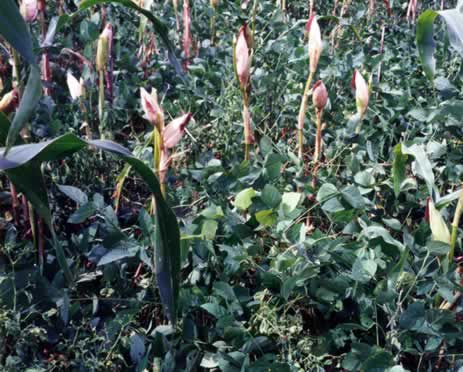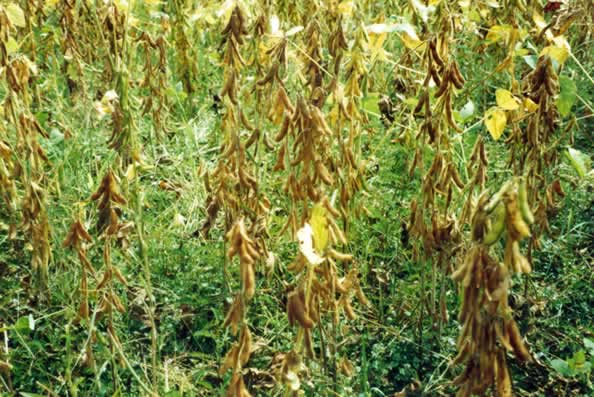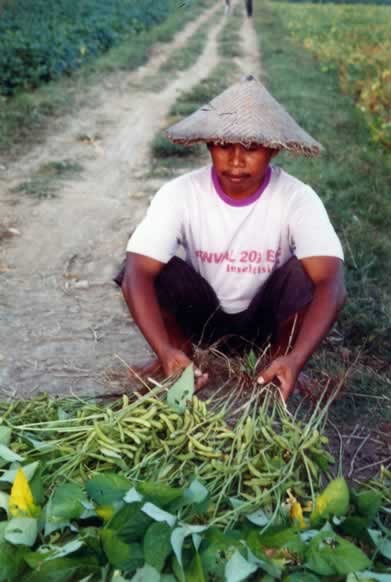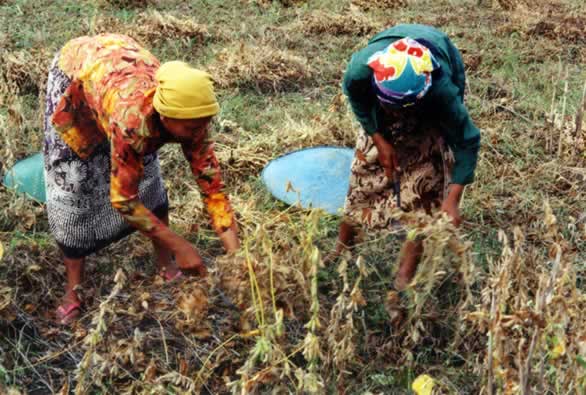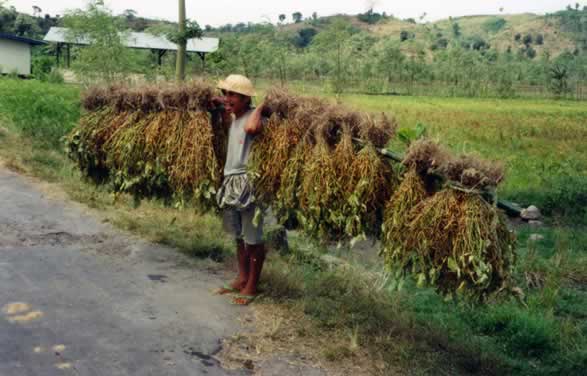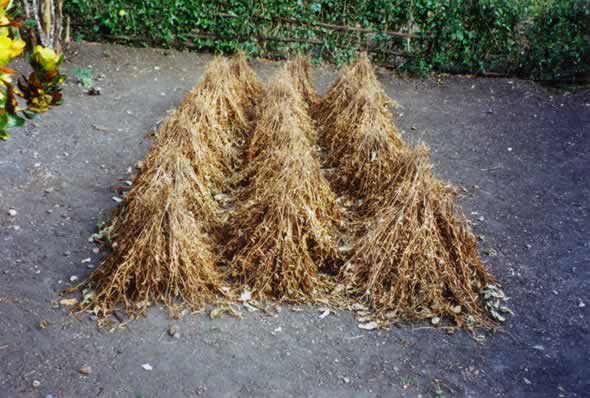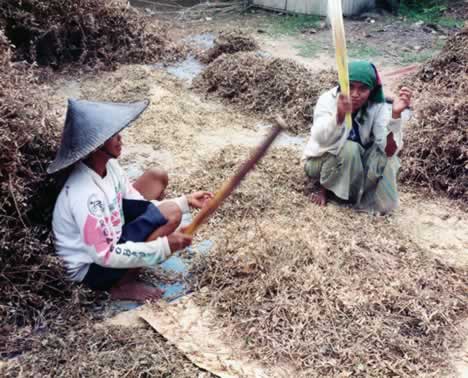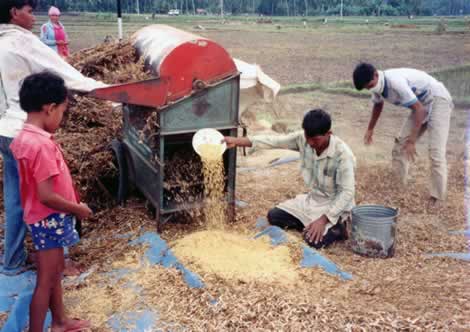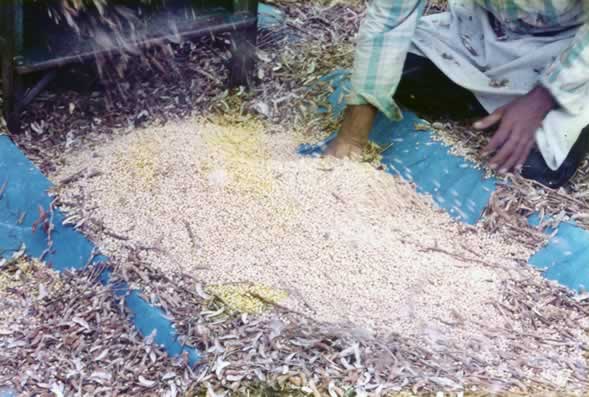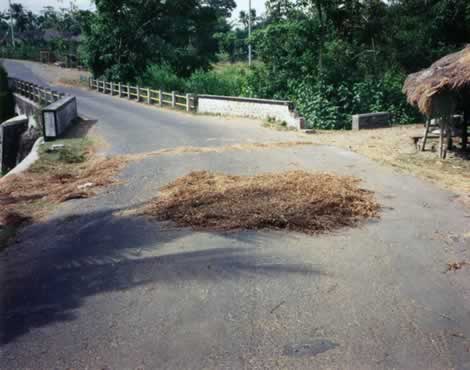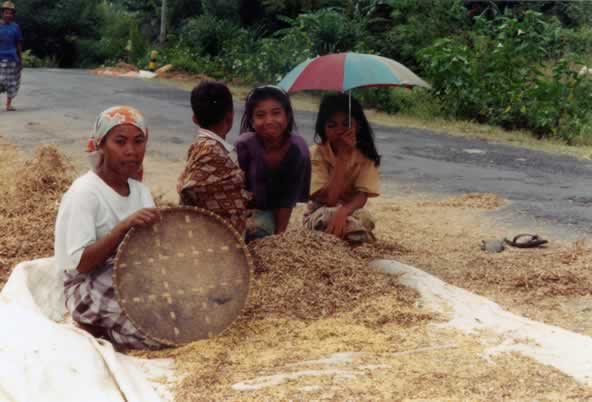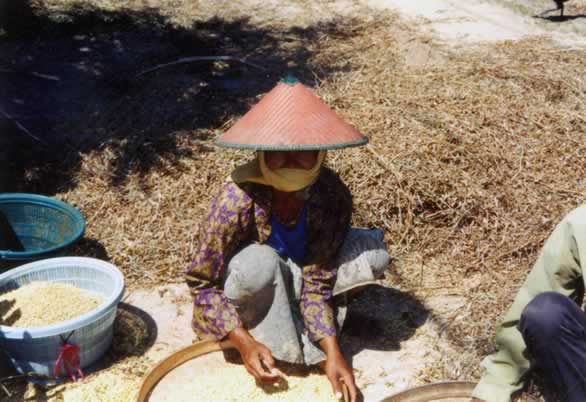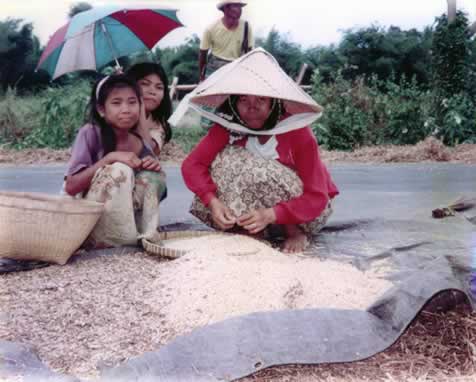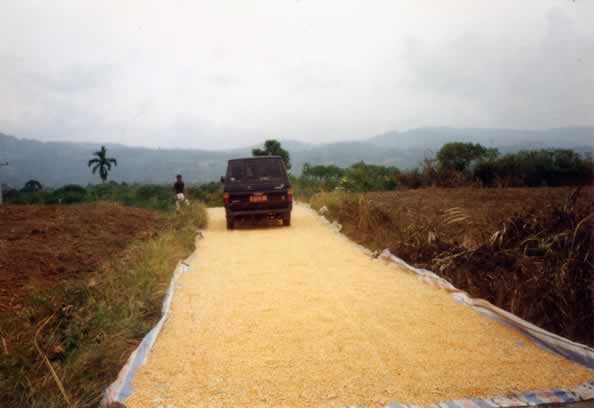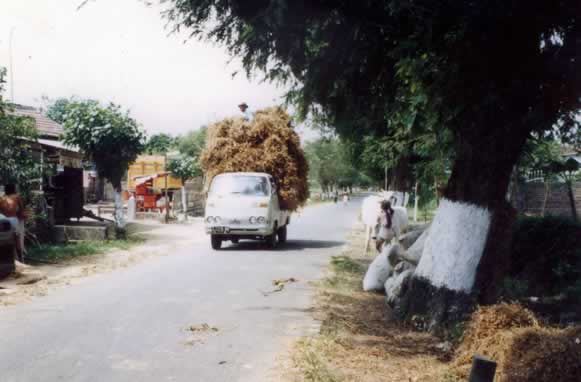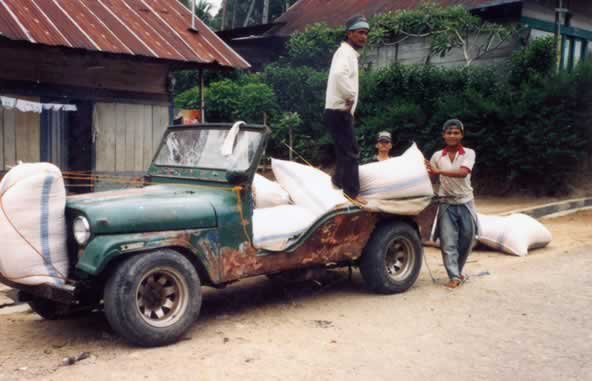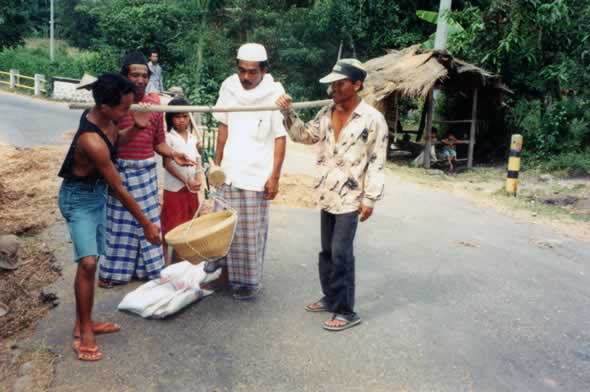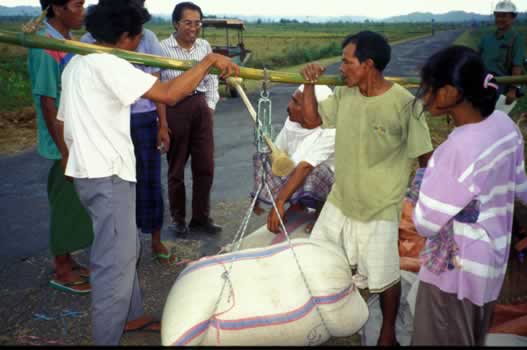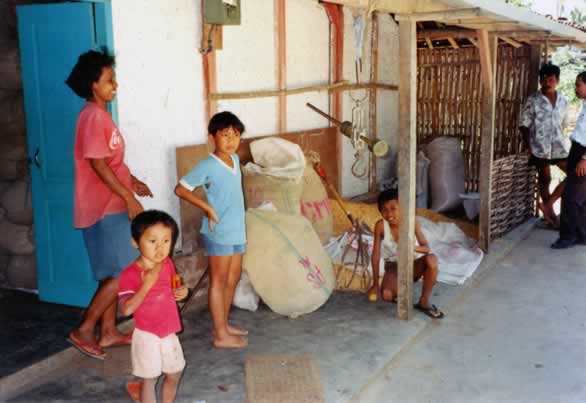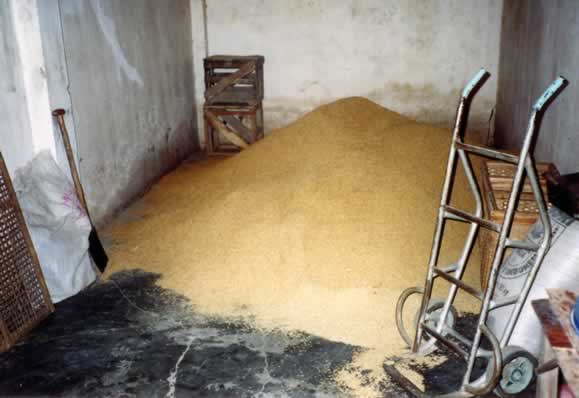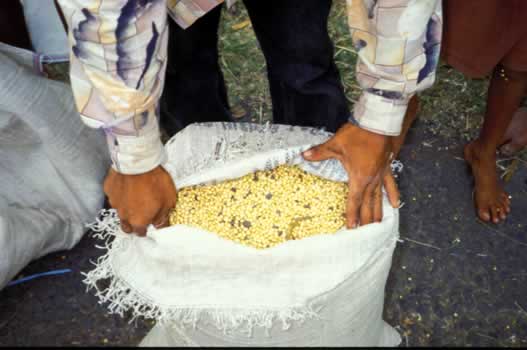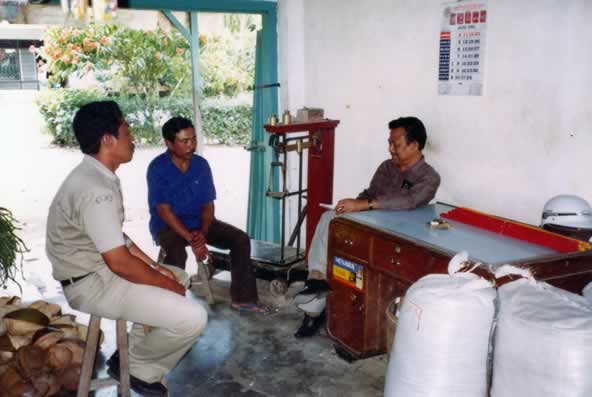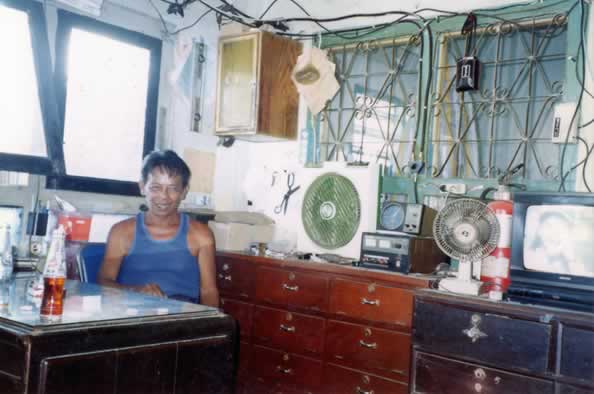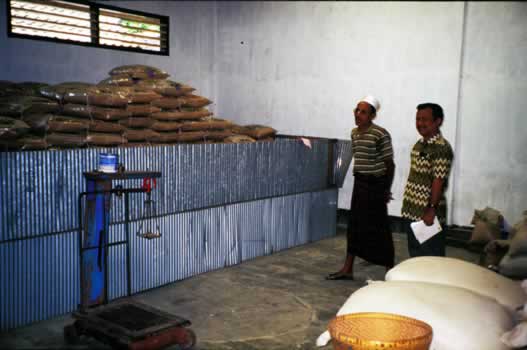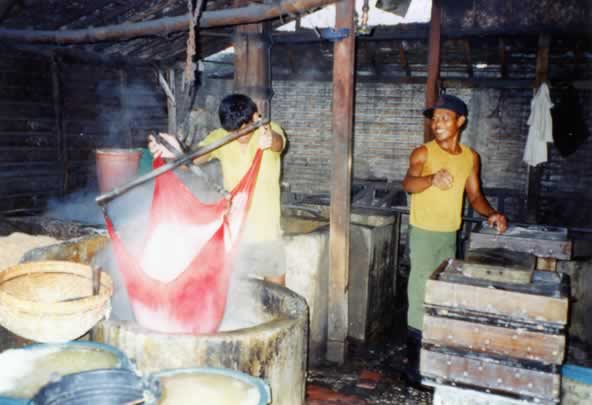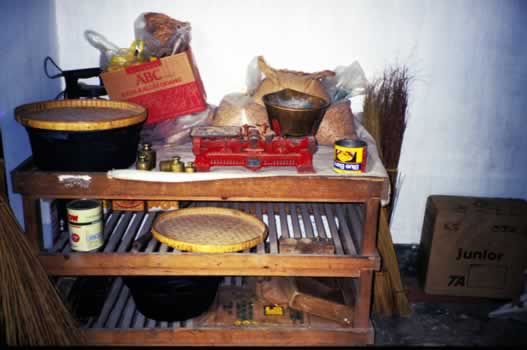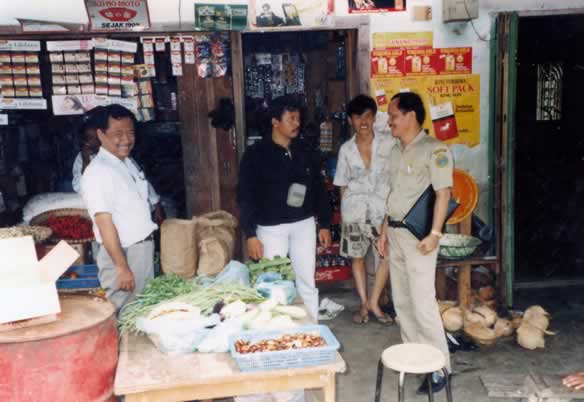INDONESIA
1980-2000
TRADITIONAL INDONESIAN
FOOD CROP FARMING
Introduction and photo gallery
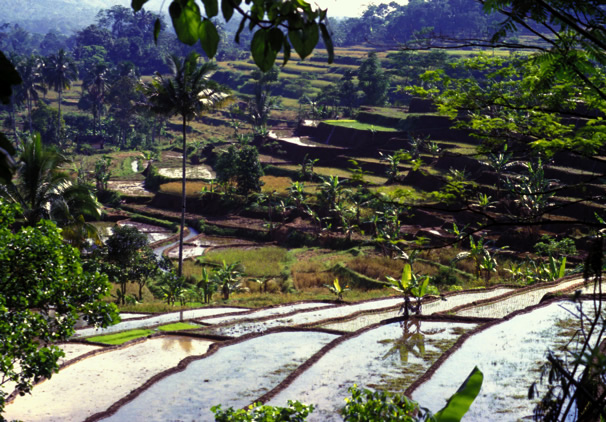
An account of his work in Indonesia
Charles Emile van Santen, agricultural economist
Bogor, Indonesia
2011
INDONESIA
1980-2000
TRADITIONAL INDONESIAN
FOOD CROP FARMING
An overview of four traditional food crop farming systems 1980-1995
- West Java: Rice based mixed farming systems: 1979-1980
- Madura: Maize based mixed farming systems: 1982
- East Java: Maize based mixed farming systems: 1982-1989
- Soybean seed systems in five Provinces of Indonesia: 1995 Aceh, North Sumatera, East Java, Lombok and Sumbawa.
Including
A Monograph on:
Farmer Participatory Research Methods
within the context of farming system research
1998
An account of his work in Indonesia
Charles Emile van Santen, agricultural economistBogor, Indonesia
2011

An overview of traditional food crop farming systems 1980-2000
An overview of traditional food crop farming systems 1980-2000-
- West Java: Rice based mixed farming systems: 1980
- Madura: Maize based mixed farming systems:1982
- East Java: Maize based mixed farming systems: 1982-1989
- Soybean seed systems in five Provinces of Indonesia:1995
Aceh, North Sumatera, West Java, East Java, Lombok and Sumbawa - Monograph: Farmer Participatory Research Methods
- My assignments in Indonesia 1980-2000
- List of reports by Charles van Santen 1980-2003
Traditional Indonesian Food Crop Farming during the 1980’s
In the following passage a summary of findings of studies of development programs is given, which aimed at improving traditional agricultural food crop farming systems in Indonesia and in which studies I participated as an agricultural economic researcher. The following text is accompanying the four chapters of the photo galleries of my professional work in Indonesia.
Background
In 1980 over 50% of the Indonesian population of some 200 million inhabitants was still dependent on traditional farming. Farm size averaged less than 0.5 ha on Java Island and between one and two hectares on the outer islands, reflecting differences in soil and climatic conditions.
On Java and in the other areas with favorable physical conditions, including soils, rainfall and irrigation and infra structure situation, most farms were producing two to three crops per year resulting in an average cropped area per annum of over 1 ha on Java and 2 to 3 ha in the outer islands.
Many farm families, with a farm size of less than 0. 25 ha, were part- time farming and part- time working as laborers, either on another farm or in other local industries to supplement their income. Farm activities varied widely between areas depending on local conditions and choices.
- Food crops: rice, maize, soybean, groundnut and cassava
- Vegetables: onions, leaf and root vegetables;
- Tree crops: Coffee, tea, cocoa, cloves, oil palm, coconut, banana, mango and fruit trees.
- Shrubs: vanilla
- Livestock: caribou, cattle, sheep, goats, chicken and ducks
- Fish cultivation in fishponds
Each particular farming system focused on a selection of the above farming enterprises according to local physical and infra structural conditions, market demands and traditions.
Most farms produced two to four different main crops and several minor crops.
Farming practices differed widely between areas and provided a wide range of different farming patterns and systems in Indonesia, due the very wide range in different physical farm conditions between farming areas.
The four traditional farming systems included in this photo gallery:
- West Java: 1979-1980: Rice based lowland irrigated farming below 500m and upland vegetable farming 500 m and higher. Images CVSIND001-024.
- Madura: 1982: Maize based mixed rain fed farming at sea level.Images CVSIND025-102
- East Java: 1983-1989: Maize based mixed upland farming on young volcanic soils at 400–1000 m above sea level. Images CVSIND103-197
- Soybean seed farming systems in five provinces of Indonesia 1995:
1.Aceh, 2.North Sumatra 3.West Java 4.East Java 5.Nusa Tenggara Barat:
Images CVSIND 198-2611.

Survey areas are indicated by a pin:
Cikajang-Garut District
Jalaksana-Kuningan District
1. Traditional Farming in West Java Province: 1979-1980
A study of rice based lowland irrigated farming below 500m & upland vegetable farming 500 m and higher altitudes: Images CVSIND 001-024
During 1979/1980 a pilot farm survey was conducted in two districts of West Java Province, under the FAO sponsored Pilot Farming Systems Project in West Java and Lampung Provinces. The following information is derived from this study in West Java, which was carried out under my guidance.
In West Java in the early eighties the statistics showed that there were 4.65 million small holding farms, of which 52% were rain fed and 48% irrigated. The study focused on the 2,43 million rain fed holdings, of which 80% operated less than one hectare, with an average farm size of 0.46 hectare.
Most of these holdings operated complex mixed farming systems on four to five different parcels of land, divided over bottom- and up-lands and cropped an average of six different crops in any agricultural year with a selection of the following crops: rice- both wetland and upland; cassava, maize, sweet potato, groundnuts, various species of vegetables, cloves, fruit trees, firewood at higher altitudes coffee or tea trees.
Intercropping, mixed cropping and relay cropping were common features and often more than one crop per calendar year was harvested from the same parcel.
- Intercropping-two or more crops are grown simultaneously in the same area, in the same, alternate of paired rows.
- Mixed cropping –two or more crops are grown simultaneously in the same field at the same time, but not in row arrangements and
- Relay cropping, whereby seedlings or seeds of the following crop are inter-planted with the maturing crop on the field.
Livestock includes goats, sheep, poultry and fishponds. Cattle were only reported in 1% of the holdings, forcing small farmers to hire cattle for land preparation & ploughing.
At the altitudes above 500 meters above sea level, vegetable crops dominate and include cabbages, onions and potatoes.
The images CVSIND001 to 009 show irrigated rice fields, including ploughing and harvesting rice.Images CVSIND 010 & 011 shows fishponds. Images: CVSIND 013-015 show vegetable farming in the highlands and separately, image 016 shows a quinine plantation and image 017 a large tea plantation. Images 018& 019 show the intercropping of papaya trees with bananas, vegetables and groundnuts. The series ends with an image of a dogcart, a two wheel horse drawn vehicle-image 024.
Source: Report on the Pilot Farm Survey 1980 in Cikajang, Garut & Jalaksana, Kuningan Districts in West Java Province. Bandung 1980: Compiled by Charles van Santen.
2. Madura Maize based farming systems. 1982
Images: CVSIND025-102

Villages studied are indicated by a pin:
Kedungdung, Sampang, Pamekasan,
Sumenep & Tanjungbumi
A study was made in 1982 of food crop farming in Madura, to support the Madura Groundwater Project, which project was to establish groundwater supplies for a number of tube well areas, each of 30 ha per location in Madura. For this purpose, a farm survey was carried out during February 1982 by a team of the Malang Research Institute for Food Crops. The following information is derived from the teams’ report:
In 1982 there were 490. 000 farm holdings reported on the island of Madura, of which 80% was in the size class of under 0.50 ha.
The Madura farm was characterized by intensive mixed farming systems, including crops and livestock.
Food crops:
Eighty- seven percent of the farmers grow dry land crops, particularly maize, which crop is the main staple food for the Madura farm family. Due to the short growing season on Madura, special short duration maize varieties are planted, which mature within 60 days –images 060 to 062. After harvesting and drying, the maize is grinded with a traditional maize grinder- image 044, and the ground maize is steamed in a similar fashion as rice on Java; sometimes the maize is mixed with rice.
Eighty- five percent of the farmers report growing wetland rice on rain fed or irrigated land. Other crops planted are: groundnut, mung beans- Vigna radiate-, soybean, cowpea, cassava, sweet potato and sesame. In Eastern Madura tobacco is grown during the dry season as a cash crop. Vegetables include tomato, pepper-Capsicum var.-, other Solanaceae species and various leaf vegetables. Fruit trees include banana, coconut, mango, rambutan-Nephelium lappaceum-, papaya, citrus and kedongdong-Spondia mombin.L.
A typical holding operates from three to six separate parcels. Most parcels are cropped two to three times per year mainly with short maturity varieties, as available moisture allows. Inter cropping, mixed cropping and relay cropping are common features. See introduction on West Java farming on page 7.
Animal husbandry is closely interwoven with crop husbandry. The average number of draft cattle per farm is 1.8 head per unit, implying that most farmers have the means to plough their land with their own cattle. Cattle include both draught animals for ploughing -images 042, 043, 051- 055-and racing bulls for the famous Madura bull races- images 084 to 093. Other livestock species include goats, sheep, chickens and ducks. Most livestock is stable fed on crop residues. Dung forms an important produce and is applied as manure for fertilization of the fields, either for on-farm use or sold.
Farm families are large and consist of an average of 5.4 persons per farm, of which an average of 3.6 persons work on the farm. About 70% of the farmers are literate with an average of 2.6 years of schooling.
About 90 % of the farmland, is owned by farmers under traditional land ownership rights and about 10% of the holdings crops land is rented. The average cropping intensity is 183, which implies that 83 % of the farm fields is twice cropped per year. About 60% of the farm holdings report off-farm employment during part of the year, to increase their income, as most holdings produce is insufficient for maintenance of the farmer’s family. Off- farm employment on Madura Island includes work in the traditional sea salt industry in East Madura, in fisheries-in the coastal belt and petty trading. Other Madura farmers work part time on Java Island as food sellers, becak drivers- three wheel bicycle taxis- and other unskilled jobs.
A very rough estimate of annual farm income amounts to US$ 500, explaining the need for the average farmer to seek off- farm employment, either on Madura or on Java.
Source: Existing Cropping Systems in Madura. 1983 C.E. van Santen
3. Maize based farming systems on young volcanic soils Malang District, East Java: 1983-1989
Images CVSIND 103-197
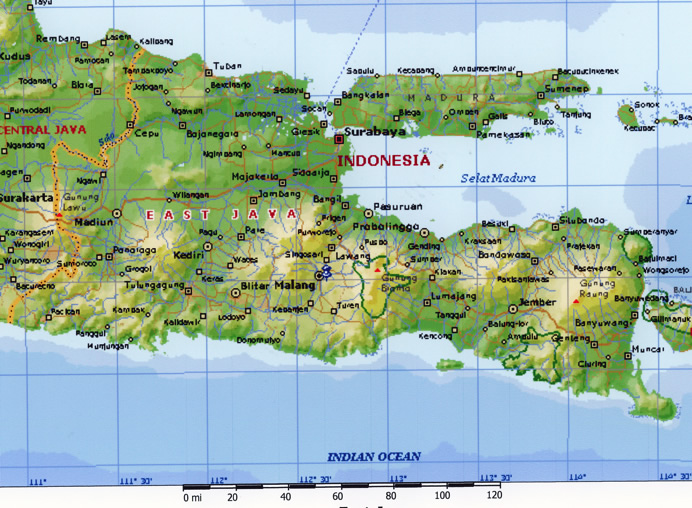
The study of maize based farming systems was initiated in the Malang District
during 1982 and is indicated by a pin on the map. In following years the study was extended to other districts in East Java.
Detailed maps are available in the individual reports made for the study.
The description of the maize based farming systems on young volcanic soils in Malang District, East Java is based on the results of the “On farm research program” of the Malang Research Institute for Food Crops, which program studied maize based farming systems on young volcanic soils, at altitudes between 400 & 1000 meters above sea level. The program was conducted between 1983- 1989 by a research team of the Malang Research Institute for Food Crops, East Java- MARIF.
“The original objective of the study by the “Maize-On-Farm-Research” team was the question of the MARIF maize breeder, who had developed a new maize composite named “Arjuna”, which he had distributed among a number of farmers growing maize. However, when he visited the maize fields of the cooperating farmers, he observed that his Arjuna variety looked spindly and was planted with a much greater plant density than he had advised. He also found that the cooperating farmers had given a much higher application of nitrogen fertilizer than he had advised, while they had neglected his recommendation to apply phosphate and potassium fertilizers. Furthermore, in many farmer fields many maize plants were lodging. The average yield level of the Arjuna variety of farmers was only 1.8 ton per ha, while the average yields obtained on the trial fields of the research station of the same maize variety, were between 4 to 5 ton dry grain of maize per hectare.
Following this the “Maize-on-farm research team” was formed with members of all disciplines of the Institute, including a maize breeder, an agronomist, a soil specialist, a pest- and disease specialist and agricultural economists. This team started its work, conducting a survey among maize growers in the Malang District with special attention to farmers already growing the Arjuna variety. The result of the survey was an overview with a detailed description of the practices of farmers growing maize, including information on the size of plots used for maize growing. The maize growing activities of the farmers were summarized as follows:
Farmers cropped their maize fields very intensively: Their farm practices included adequate land preparation, row planting, high seed rates, excellent weed control, high levels of fertilizers and farmyard manure. Yet the maize plants, regardless of variety, had spindly stalks and discolored leaves and in many fields lodging was a serious problem. Farmers’ maize yields were on average about 1.8 ton per ha, compared with 5 tons per ha obtained on the fields of the research station, for the same maize varieties. Initially, the research team could not explain the differences in maize yields. It was therefore decided to work together with farmers growing maize and plant” On farm trials “, to compare the maize growing practices of the farmers with the recommended practices of the research station.
Fortunately, five of the interviewed farmers agreed to join hands with the research team to conduct a“ Maize on farm trial” on their fields during the following maize growing season.
All participating farmers warned the team a few days ahead when they intended to plant the next maize crop.
On the planting day the team joined the cooperating farmer planting his maize field, while planting in the middle of the field a trial, following the recommendations for growing maize as developed on the research station.Each participating farmer used his own maize planting method, which was summarized as follows.
Row planting is with 7 to 8 seeds per plant hole without fertilizer application. First fertilizer application is with nitrogen after one month after planting, together with a first weeding of the field.
The teams’ management consisted of three maize kernels per plant hole, together with 5 gram of nitrogen, 3 gram of phosphate and potassium fertilizers.
One week after planting, the team members inspected the maize field and observed that plant emergence in both the farmers part and the teams part of the field was nearly hundred percent.
One week later, 14 days after planting, the team inspected the field again and the researchers were shocked to observe that in both sections of the field, a considerable number of seedlings had disappeared.
Consulting the farmer, the team was told that this was the normal picture about ten days after planting because of an attack of shoot flies who eat away a large number of the recently emerged maize seedlings.
The farmer explained that this shoot fly pest was the reason why he planted eight maize seeds per plant hole, as he hoped that at least some seedlings would survive. The shoot fly attack within the first three weeks after planting also explained why farmers were giving their first nitrogen fertilizer application only after four weeks after planting, as only at that moment in the maize growing cycle farmers could determine which plants had survived the shoot fly attacks. Due to the slow decomposition, it also made no sense to apply potassium and phosphate fertilizer to the maize plant at that late stage, as phosphate and potassium fertilizers decompose slowly and come only gradually available to the plant roots, while the need for these fertilizers is particularly great immediately after emergence.
None of the research team had experienced a shoot fly attack before this, as it appeared that all maize and other food crop trials planted on the research station fields always received a standard application with the insecticide “Carbofuran” at planting, to avoid insect damage!
Learning from this experiment, the following maize growing season the research team added per plant hole during planting a 3-gram “Carbofuran” insecticide for a second round of on-farm trials with ten cooperating farmers.
This time it was the farmers who were surprised because they observed that in the trial field all the maize seeds survived and grew into vigorous plants. This was due to A) the “Carbufuran” insecticide which prevented a shoot fly attack and B) because the plants could absorb all nitrogen, phosphate and potassium fertilizers during the first weeks after planting. Furthermore due to the lower plant density no interplant competition occurred, resulting in the absence of spindly and lodging maize plants.
A comparison of the yield at harvest showed that the “Arjuna” maize seeds when managed with the recommended fertilizer gift and insecticide yielded, also on farmer fields, nearly five ton of maize per ha, compared with farmers yields of 1.8 ton per ha.
After the shoot fly problem was solved, the research team was able to identify other maize yield reducing problems, including reducing plant densities, lodging and spindly maize and convince the farmers to follow the recommended planting practices.
Already after the first successful season of the research team, nearby living farmers started to follow the recommended maize growing instructions and ten years after the team had started to do its first maize on farm trial, the East Java provincial maize yields per ha had risen from 1.8 ton per ha to and average of 4 ton of maize per ha.
The images of the photo gallery
The images shown in the present photo gallery of maize farming systems in East Java, were taken during the surveys-Images CVSIND 103-110 and on farm trials: Images 111-197. This program covered the period 1983 to 1989, whereby the research cycle covered two maize crops per year. The actual study area covered about 30 000 ha of land planted with maize, but with two maize crops per year represented an annual area of 60 000 ha of maize harvested in the Malang District. Note however, that the conditions in the study area are representative for a much wider physical area of approximately 150 000 ha of maize, or an annual harvested area of 300 000 ha of maize, as most aspects of the maize farming systems in the Malang District are basically representative for the upland entire area of maize grown in the East Java Province, which measures about one million and hundred twenty five thousand ha planted with maize (Tabor et al. 1986), or an annual harvested area of 2.250 000 ha of maize.
Background: Farming in the Malang District is characterized by traditional smallholder farming systems with small farm sizes: The average farm size is 0.8 ha divided over three to five different plots per farm holding.
Maize is cropped either as mono crop or intercropped, mixed cropped or relay cropped whereby maize is the dominant crop with other food crops such as soybean, ground nuts, cassava, dry land rice, vegetables and fruit trees, including papaya and other local fruits. Images CVSIND111-131
Yields of the major crops in the Malang district were relatively low before the maize on farm research program started in 1983, for example maize: 1.8 ton of dry maize per ha, but after ten years in East Java, average maize yields were 4 ton per ha and had increased to over a hundred percent compared with 1983. The yield levels of other food crops in East Java remained at the same level as in 1983, as there had not been on-farm research programs for these crops, as is shown in the following table:
Average Yields in East Java were as follows:
| Crop | Average yields in 1983 per harvested crop: kg/ha dry grain | Average yields in 1993 per harvested crop: kg/ha dry grain |
| Maize | 1800 | 4500 |
| Rice | 4800 | 4800 |
| Soybean | 950 | 950 |
| Groundnut | 950 | 950 |
| Mung Bean | 650 | 650 |
| Cassava | 10500 | 10500 |
Main activities of maize growing:
Land preparation: ploughing, levelling and harrowing the land with a pair of cows or oxen. This includes manure application, at the end of the rainy season and after the first crop. Images CVSIND138, 153,154 & 172
Planting: Row planting of the maize seeds: traditional farmer 6 to 8 seeds per plant hole with 150 000 plants per ha. In the on-farm research program three seeds were planted per plant hole with an average of 50 000 plants per ha. In addition, an application with three gram of “Carbofuran” 3 % granules was given in the plant hole to combat shoot fly infestation- to avoid that the shoot fly larvae eat the maize seedlings in the period between 1 to 3 weeks after planting. Images CVSIND142-145. Nitrogen, phosphate and potassium fertilizers applications are also given in the plant hole at planting. Images CVSIND141& 155 to167 show the effect of deficiencies of these fertilizers: Images 146 & 147 show phosphate deficiency Image 148 & 149 show a sulphate deficiency. Also is shown the effect of Downey mildew- a fungus disease, which in some crop seasons can devastate up to 50% of a maize crop. Downey mildew can only be prevented by selecting Downey mildew resistant varieties. Images: 150 &151. In addition, there are a number other insect pests, which can damage maize plants: Image 152
First weeding thinning and hilling up: are done about 3 weeks after planting.
Second weeding and second fertilization: Four weeks after planting, cattle again plough the maize field: cows or oxen. Image: 172. Thereafter, the maize field is further cleaned with a hoe-Images 169 & 170 After this, a second nitrogen fertilizer application of 5 gram per plant is given Image: 171 & 174.
The third nitrogen application is given six weeks after planting Images: 173,175&176.
The different stages of the maize plant, are shown in following images:
One-week-old maize plants: 177
Ten days old maize plants: 178 & 179
Two weeks old maize plants: 180 &181
Three weeks old maize plants: 182
Four weeks old maize plants: 183
Six weeks old maize plants: 184
Eight weeks old maize plants: 185
Ten weeks old maize plants: 186
12 weeks old: the maize plant is forming a tassel: 187
14 weeks after planting: the maize plant starts to form a cob: 188
15/16 weeks after planting the maize plants are ready for harvest: 189
Harvesting of maize: 190,191 and harvested field 192
Checking the maize yield: 193
Drying maize cobs: 194 & 195
Traditional containers to carry maize cobs: 196
NB. The maize is often stored in the cob leaves, in bunches on top of the kitchen ceiling. An example of stored maize is shown in image: 109 & 156
Grinding- After the maize is peeled the maize kernels are cracked or ground to prepare “ beras jagung” or “maize rice”, which is steamed in a similar fashion as rice. 179
The above description of maize growing in the Malang upland- Tegal farming systems show the close interaction between the maize crop and livestock:
-Cattle provide draft power for land preparation and weeding;
-Cattle manure is applied as fertilizer to selected fields, in particular the maize fields
-Maize thinnings-cuttings of redundant young maize- serve as one of the sources of livestock feed.
The majority of labor is provided by family labor, while hired labor is occasionally hired to assist with harvesting.
Sources:
-The Maize Survey: Malang District December 1984. The report was a joint effort of the survey team, with me as the editor.
-Maize on-farm Research in the District of Malang 1987; Report prepared by the research team, which includes me.
– Planned Change in Farming Systems: Progress in On-Farm Research, 1991 edited by Robert Tripp. John Wiley & Sons Chichester, New York etc.
Chapter 7: From Diagnosis to Farmer Adoption: MARIF’s On Farm Research Program in East Java. I was one of the co-authors for this chapter
4. SOYBEAN SEED DISTRIBUTION SYSTEMS IN FIVE PROVINCES OF INDONESIA 1995
Images198-261
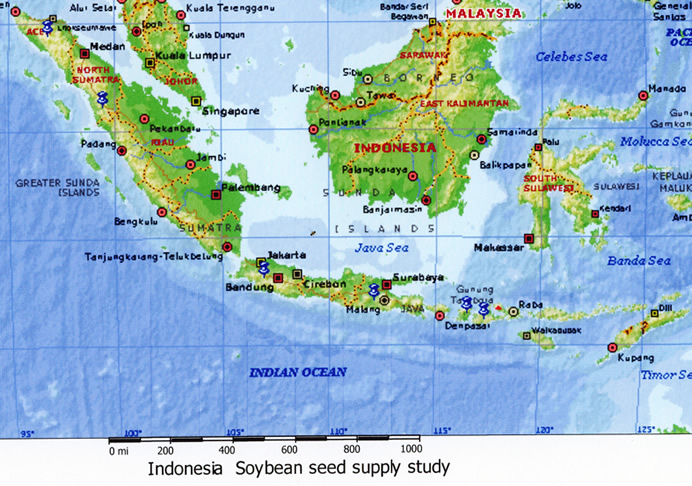
Provinces, included in the study are indicated by a pin. These are:
ACEH, NORTH SUMATRA, WEST JAVA, EAST JAVA, NUSATENGGARA
The study covered a total of 17 districts.
N.B In Nusa Tenggara province the islands of Lombok and Sumbawa were both included.
Background
During 1995 the Ministry of Agriculture of Indonesia conducted a study on soybean seed systems in Indonesia.
The objective of the study of “Local Soybean Seed Systems “ in Indonesia was to find out how traditional farmers in Indonesia manage to obtain viable soybean seed, while planting only one soybean crop per year, purchasing only 13% of the total seed requirements as certified seed and given that soybean seed looses its viability rapidly in less than three months after harvesting.
The study covered the five Indonesian Provinces with the largest area of soybean cultivation, covering 900 000 ha of the total area of 1 500 000ha planted with soybean in in 1994/1995 in the provinces of Aceh, North Sumatra, West Java, East Java and Nusa Tenggara Barat- Lombok & Sumbawa. A team of two senior and five junior Indonesian agricultural researchers under my directorship completed the survey for this study during May- July 1995.
A summary of the report, written by the two senior Indonesian researchers and myself is presented here as a companion to images 198-261 of the Indonesian Photo Gallery of my professional work.
The importance of soybean in Indonesian food crop agriculture:
Soybean, after rice and maize is the third most important food crop in Indonesia. The genetic center or origin of soybean is located in North China. However soybean has been grown on Java since hundreds of years and was probably introduced by Chinese immigrants before 1600. Since the 1950’s soybean production has rapidly spread to the outer islands, however, demand increased even faster resulting in large soybean imports to cover the shortfall. In November 1985 the Government of Indonesia therefore launched a special soybean development program to again achieve self – sufficiency in soybeans existing before the seventies. This effort resulted in an increase in the annually planted area with soybean from 900 000 ha in 1984 to over
1 500 000 ha in 1994, while average yield levels increased from 900 kg per ha in 1984 to 1 100 kg per ha in 1994. Yet only 13 % of the seed in 1994 was purchased from Government and commercial seed companies. This implies that 65 000 tons of soybean seed or 87% of seed was handled by local seed systems, either on-farm saved, locally purchased or exchanged.
Table 1 Planted area of Soybean in the five Provinces of Indonesia with the largest area of soybean in 1994
| Province | No of ha planted in 1994 |
| Aceh | 166000 |
| North Sumatra | 52000 |
| West Java | 98000 |
| East Java | 453000 |
| Nusa Tenggara Barat | 138000 |
| TOTAL | 907000 |
Soybean as a food crop
Soybean is an important food crop with high protein contents of about 40% and fat contents of 20%. The annual consumption per person in Indonesia is 16 kg, of which 60% for food and 40% for livestock feed. Soybean is not directly consumed but is processed into products such as tahu (coagulated bean curd): tempe (fermented soybean cake) and ketjap (soybean sauce) or used for livestock feed or industrial purposes.
Farmer’s seed supply systems.
Seed is an indispensable input for agriculture and farmers obtain their seed from the following sources:• Grain retained on-farm and used as seed
- Grain bartered at the local level and used as seed
- Grain sold as unlabeled seed brought from the local market
- Certified or labeled seed bought from the formal distribution system
Reviewing the main food crops in Indonesia as grown by traditional smallholder farmers, it is known that the bulk of the seed for food crops is supplied by local seed systems, which are based on on-farm saved seed or seed obtained locally from other farmers or traders.
Supply of rice and maize seed:
Rice and maize seed in traditional agriculture is retained on-farm grain, while in development programs farmers receive improved rice seeds from the development agency concerned, or buy improved seeds from the seed rice industry. It is furthermore an established fact that seed from traditional rice and maize varieties and landraces can be stored on farm for several seasons, while maintaining a high viability.
Supply of soybean seed:
Soybean seeds rapidly loose viability and can only be stored for periods of less than three months. However, most traditional smallholder farmers in Indonesia who plant soybean, plant only one soybean crop per agricultural year, mainly as a secondary crop after rice or maize. The question arises how, considering these conditions, can they obtain viable soybean seed?
The main purpose of the study
The main purpose of the study was to find out how the Indonesian farmers who plant soybean obtain their seed, given the situation that most farmers plant only one soybean crop per year and that the viability of soybean seeds is less than three months. The total soybean area cultivated in Indonesia in 1994 was about 1.5 million ha with an average seed rate of 50 kg per hectare and therefore the total amount of soybean seed needed per year is about 75,000 ton per year. In the season 1994/95 only 10,000 tons of soybean were provided by Government agencies and commercial companies, which implies that an amount of 65,000 tons of soybean seeds were locally produced or exchanged.
Up to 1995 only a few studies of the soybean industry had been made, of which the Lenggogeni report of 1990 is the most complete study. The main focus of the Lennogeni report was at the macro level, identifying seed flows major production areas to major consumer areas of soybean in Indonesia, while only limited attention was given to the seed flow between farmers. This study mentions however, a specific local seed supply system, with a seed flow between farmers called “Inter-field seed flows” or JABAL system (Jalur benih antar lapang)
The purpose of the present study was therefore to find out in detail:
- Farmers’ source and management of soybean seed
- The role of soybean in the farming system
- The local soybean and grain market
And in addition to collect primary information on:
- Costs and returns of soybean production
- Local soybean seed growers
- Farmers ‘soybean seed: quality; identification of varieties grown by farmers;
- Yields obtained with farmers’ soybean seed.
To conduct the fieldwork a team of seven Indonesian agricultural researchers under my guidance visited the provinces of East-Java, Nusa Tenggara Barat, Aceh, North Sumatra and West Java during May –July 1995.
The team interviewed 510 soybean- growing farmers, 69 traders and six seed growers. Also 87 district reports and 89 seed samples during harvesting or planting soybean were collected.
Description of the JABAL system
The main finding of the study was a detailed description of the “JABAL” system or “Inter field seed flow system for soybean”.
It was confirmed that in each major soybean producing area, the agricultural year consists of three seasons and that in each season soybean are planted in a particular land use type. To illustrate the “JABAL” system, a description is given of the soybean seed supply in Lamongan district of East Java Province. The map of this district illustrates clearly the flow of soybean seed between the six sub districts of Lamongan, using the three planting seasons followed in this district: (Image 198, 217 & 223)
-On dryland in Kecematan Mantup during the rainy season
– On rainfed sawahs during the first dry season in Kecematan Kembangbahu and Tikung .
-On irrigated sawahs during the second dry season in Kecematan Sukodadi, Sugio and Kedungpring. See following map:
| Planting season | Land use type | Farmers type of operation |
| Rainy season:
November – February |
Dry land:
Kecematan Mantup |
Farmers operating dry lands |
| First dry season
February –May |
Rain fed sawahs:
Kecematan Kembangbahu &Tikung |
Farmers operating rainfed sawahs |
| Second dry season
June- September |
Irrigated sawahs:
Kecematan Sukodadi, Sugio and Kedungpring |
Farmers operating irrigated sawahs |
- Farmers operating dry lands, that is higher located lands, often on the slopes of mountains, plant soybean in the rainy season, from November to February, buying seeds from farmers who planted soybean during the previous second dry season, some directly but mainly through local village and district soybean dealers.
- Farmers operating rain fed sawahs plant soybean during the first dry season from February to May, buying seeds from farmers who planted soybean during the previous rainy dry season, some directly but mainly through local village and district soybean dealers.
- Farmers operating irrigated sawahs plant soybean during the second dry season from June to September, buying seeds from farmers who planted soybean during the previous first dry season, some directly but mainly through local village and district soybean dealers.
- After the above agricultural year the cycle repeats it self and farmers operating dry lands will plant again soybean in the period from November to February obtaining seeds from the farmers, who planted soybean during the last years’ second dry season on irrigated sawahs, thus continuing the cycle.
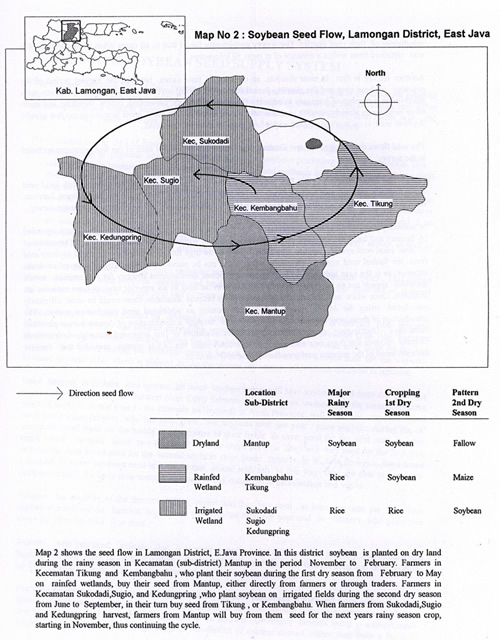
Source: Local Soybean Seed Systems in Indonesia 1996:
van Santen C.E, Heriyanto & Eko Legowo
Summary description of the JABEL system
The JABAL system or the “Inter field soybean seed supply system” operates in the study area of the five provinces and other soybean production areas of Indonesia. For the year 1995 the JABAL system supplied 66% of all soybean farms with seed, while on-farm saved seed is reported in 34% of the soybean farms.
The operation of the JABAL system is based on the combination of three features:
- The diversity of physical conditions found in all major soybean producing areas in Indonesia, which results in three land use types: dry lands, wetlands rain fed and wetlands irrigated, which in most areas are located within a short distance of each other.
- Due to the relative high rainfall with favorable annual distribution, sufficient water is available in food crop producing areas in Indonesia in most years to allow farmers to grow two to three successive crops, among which soybean. Crop seasons are: rainy season, 1st dry season and 2nd dry season.
- The fact that soybean genotypes to date planted in Indonesia appear suitable for rainy season as well as for the first and second dry season plantings (Sumarno, 1985)
Soybean is thus grown during three cropping seasons, using one of three land use types. This allows the movement of seed between seasons and land use types, thereby avoiding the problem of reduced germination due to seed storage over one or more cropping seasons.
Thus, for example, seed needed for dry land plantings during the rainy season is ob¬tained from irrigated wetlands where soybean was planted during the second dry season from the previous crop year. Farmers planting soybean in wetland-rain fed during the first dry season obtain their soybean seed from the dry land soybean crop grown during the previous raining season, and in their turn supply seed for the wetland-irrigated soybean crop, which is planted during the second dry season, after which the cycle is repeated.
Some farmers in E. Java, who operate all three land use types, will save soybean seed from the previous crop as planting material for the next crop. Other farmers, using the same land use type for three successive crops of soybean in one year, as for example on dry lands in Aceh Province, will also use on-farm saved seed.
Other farmers, who can only grow one soybean crop per year, plant soybean during the off-season on small plots on the bunds or in a corner of their fields to save seed for the next crop. In other areas, where farmers plant two successive soybean crops per year, they will buy seed for the first crop and use on-farm saved seed for the second soybean crop. Some farmers in W. Java Province, have found a method to store soybean seed in air tight tins, mixed with ash. In this way they are able to keep on-farm saved seed for up to nine months with hardly any reduction in germination and vigor.
However, the majority of the farmers (66%) report that they buy seed, at least once per year. This applies in particular to farmers, who plant one soybean crop per year and to farmers, who plant two crops per year, for their first crop.
Farmers, who buy seed, indicate that the most important criteria for them of the seed to be purchased, is that this seed has been recently harvested. Thus, when buying seed from other farmers or traders, the farmer makes sure that the seed has been recently harvested, guaranteeing that germination and viability will be sufficient.
The team found that in East Java and NTB basically all seed purchased is supplied from within the same district or from an adjacent district. This is feasible as all three land-use types are present and all three crop-seasons are used for soybean production in all districts in East Java. Obviously, farmers living in a specific sub-district will purchase seed from an adjacent sub-district of another district, rather than from a far away sub-district. The survey consistent¬ly found that in all cases when seed was bought, this was obtained from within a distance of at most 30 kilometers.
Another feature is that in most districts, an overlap in time exists between the harvest period of the previous soybean crop and the planting period for the following soybean crop. Actually the survey team observed in a number of locations in adjacent fields some farmers harvest¬ing, others threshing and again other neighbors already planting soybean, all on the same day. In most areas farmers report that usually soybean seed is on average planted within one week after being harvested.
For all other districts in the five provinces surveyed, similar maps can be drawn as map on page 17, with local seed flows between seasons and land use types. According to staff from the Provincial Agricultural Services, from the five provinces, similar seed flows exist in the other districts, not included in the present survey.
In summary, the JABAL system represents a low cost and efficient soybean seed supply system, operated by farmers and local traders, established by local initiative, without Government assistance. The existence of this local seed system explains why there is little or no urge for farmers to buy certified soybean seed from the formal seed system, especially when it cannot be proven that this certified material performs superior, as is the case to date. The best and most efficient development strategy for the Government would therefore appear not to intervene in the JABAL system, as long as no superior new soybean varieties are available. Once, when new improved soybean varieties become available, these could be most efficiently introduced using the JABAL system, rather than creating an additional seed distribution system. The introduction of these new varieties could be best done through a combination of demonstration plots and farm days. Distributing on these farm days small quantities of this improved material to interested farmers ensures that these new varieties spontaneously enter the JABAL system, provided that farmers are convinced of the superior performance of these new varieties.
5. Traditional Farming FARMER PARTICIPATORY RESEARCH AN OVERVIEW
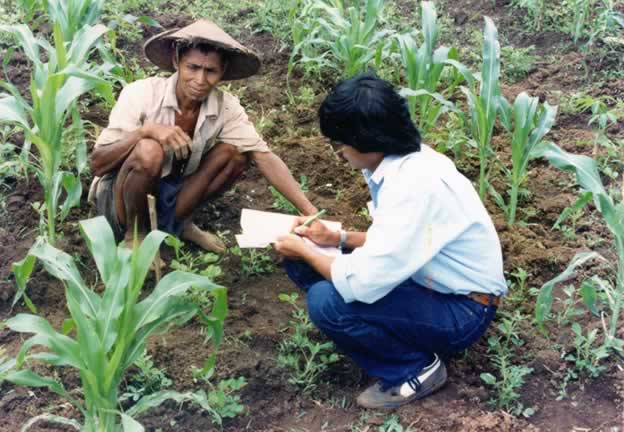
Bogor Indonesia 1998/2011
Charles van Santen
Download PDF
7. My assignments in Indonesia: 1979-2003
The following report is an account of my work from 1979 to 2003 in Indonesia, in which country I completed fourteen different assignments as an agricultural economist and farming systems research specialist.
The Period 1979-1996
During this period, I worked as an agricultural economist and farming systems research specialist for the Development and Technical Assistance Agencies, listed below:
- FAO, the Food and Agriculture Organization: Assigned to the Farming Systems Project West Java and Lampung Provinces Indonesia: 1979-1980. Was responsible for an initial socio economic study of traditional West Java food crop agriculture.
- The Directorate General for Technical Co-operation of the Ministry of Foreign Affairs of the Netherlands:
– Malang Research Institute for Food Crops.1981-1989. Was the coordinator of the Institute’s “On farm research “program, under which program several hundreds of on-farm trials were conducted with cooperating farmers in east Java and other areas and a number of international training courses for agricultural researchers were organized. The Institute’s “On-farm research program” was also visited by a number of officials, among which the Dutch Prime Minister, Minister Lubbers in November 1988.
-Strengthening the Lembang Horticulture Institute: Evaluation Mission 1989 - The Economic and Social Commission for Asia & the Pacific of the United Nations: Assigned to The Regional Co-ordination Center for Research and Development of Coarse Grains, Pulses, Roots-and Tuber crops in the Humid Tropics of Asia and the Pacific in Bogor, 1989-1995 as Program Leader for Human Development Resources, covering all 15 Asian and Pacific member countries of ESCAP. Organized in this assignment 17 international workshops and training courses in Asian countries for Asian agricultural researchers, among which training courses in Indonesia, Sri Lanka, India, Thailand, Malaysia, Philippines & Viet Nam.
- The Commission of the European Communities Technical Assistance Program for Developing Countries in Asia and Latin America: 1995-1996 & 1998:
–Palawija Seed Production & Marketing Project: 1995-1996
Coordinated the Indonesian national soybean seed supply study, for which fieldwork was conducted in five Indonesian Provinces.
–Evaluation study of the North Bali Ground Water Irrigation and Water Supply Project: 1998 Member of the evaluation team.The period 1996-2003
During this period, I worked as an agricultural economic and financial analyst for the following development projects, preparing economic and financial internal return calculations and other analysis work for agricultural development projects for the agencies listed under 5 & 6. - The following projects, financed by the World Bank and located in the Ministries of Public Works, Settlement & Regional Infra Structure and Agriculture of the Republic of Indonesia:
– Java Irrigation Improvement & Watershed Resources Management: 1996 and 1999
– Nusatenggara Agricultural Development Project: Naibonat Kupang, NTT: 1997
– Sulawesi Rain-fed Agricultural Development Project 1998
– Ground Water Development Project: 1998-1999
– The Irrigated Swamp Development Project 2000
– Water Resources and Irrigation Sector Management Program: 2003 - In addition I was involved in the following projects:
– Prefeasibility Study of the Pulisan Ecotourism Project: Minahasa Permai Resort Development 1997
– Prefeasibility study for Development of a Sugar Estate for Central Kalimantan: Salim group 1999
All my assignments, in Indonesia, during the period 1979-2003, concerned farming systems research. In particular how to involve on a practical level, the farmers concerned, in this research approach, utilizing fully the extensive practical understanding of basic farming problems, which many traditional food crop farmers possess, to help solve basic farm problems at the grass root levels. In this context I define a farming system as the unit of agricultural production of the smallholder farmer and his family, including crops and livestock and related farm activities.
During my work in Indonesia I had the privilege to study a large number of traditional food crop farming systems covering the entire country from Aceh to East Timor Provinces. At this moment, I would therefore thank all these Indonesian small farmers, who took their time to discuss with me their farms and to thank them for the great hospitality I received. Most of my knowledge and understanding of traditional food crop farming in Indonesia was acquired from my contacts with these kind and Indonesian farmers.
8. REPORTS PREPARED BY CHARLES VAN SANTEN DURING HIS ASSIGNMENTS IN INDONESIA: 1979-2003: In chronological order of Agencies:
- FAO, the Food and Agriculture Organization: Assigned to the Farming Systems Project: West Java and Lampung Provinces Indonesia: 1979-1980
1. Report on the Pilot Farm Survey 1980 in Cikajang, Garut District & Jalaksana, Kuningan District: West Java Province. Bandung 1980 - The Directorate General for Technical Co-operation of the Ministry of Foreign Affairs of the Netherlands: -The Malang Research Institute for Food Crops.1981-1989.
2. Tentative Work Program 1981-1986 Agro-Economic Section. December 1981
3. Existing Cropping Systems in Madura, October 1983
4.National Panel of Farmers: East Java Pilot Project 1982-1983: November 1983 Co author
5. Joint Proposal for an “On-Farm Research” Program for Maize: January 1984 Co author
6. A Maize On- Farm Research Program. March 1984 Co author
7. The MARIF Maize On-Farm Research Program 1984: October 1984: Co Author
8.WORKING PAPER SERIES Malang Research Institute for Food Crops: 1984- 1988 Co Author
– No 3 Trial Results On Farm Trials 1984 – First Dry Season Co Author
– No 4. Report on a Study Tour to Thailand August 22-30, 1984 Co Author
– No 5 Synopsis of the MARIF On-Farm Research Program for maize based farming systems January 1985. Co Author
– No 6. Introduction to the MARIF OFR Program, March 1985: Co Author
– No 7 Report on Trial results: Rainy season 1984/1985, May 1985: Co Author
– No 8. Report on the Maize Survey in Malang District December 1984, May 1985: Co Author
– No 9. Report on Trial results Cycle No 3 Post rainy season 1985.June 1986 Co Author
– No 13. Notes on Costs and Returns of On-Farm Research January 1986
– No 14 A Study Tour to Thailand August 5-14, 1985, September 1985 Co Author
– No 15 Report on the Trial Results Cycle No 4 Rainy season1985/1986 Co Author
– No 19 Report on the Trial results Cycle 5,6 & 7- 1986-1987 October 1987 Co Author
– No 20 Report on the Trial Results Cycle 8 &9 2987-1988. September 1988 Co Author
9.The On-Farm Research Program for Palawija based farming systems in Malang District East Java, Indonesia 1984-1986. Kansas USA October 1986 Co Author
10.The On-Farm Research Program in the District of Malang, April 1988 On the occasion of the visit of Drs P. Bukman Minister of Development Cooperation of the Netherlands: April 24, 1988: Co author
11.Program for the visit of the Prime Minister of the Netherlands, Minister Lubbers on 2 November 1988 to the MARIF. Gave a presentation of the MARIF On Farm program.
12. On Farm Research Workshop Malang April 1988 Co Author
13. Five Years On farm research in MARIF 1984-1988, April 1989 Co Author
14. Technical Report On Farm research in South Malang & Kabupaten Mojokerto September 1989 Co Author
15. Terminal Assignment Report Charles van Santen April 1989
16. Maize On-Farm Research in the District of Malang, Monograph 1987 Co Author
17. Program for the visit of the Prime Minister of the Netherlands to MARIF, November 1988
18. Planned Change in Farming Systems: edited by Robert Trip. John Wiley & Sons, Chicester 1991: Chapter 7 From Diagnosis to Farmer Adoption: MARIF’s On-Farm Maize Research Program in East Java. Co Author –Strengthening the Lembang Horticulture Institute: Evaluation Mission. 1989
19. Report of the Mid Term Evaluation Mission of Project ATA395 Lembang Horticultural Research Institute October 1989 Co Author - The Economic and Social Commission for Asia and the Pacific of the United Nations: Assigned to The Regional Co-ordination Center for Research and Development of Coarse Grains, Pulses, Roots-and Tuber crops in the Humid Tropics of Asia and the Pacific in Bogor, as the Program Leader for Human Development Resources covering all 15 Asian and Pacific member countries of ESCAP: 1989-1995
20. Regional Training Course On-Farm Research Malang May 1991 Reader: Editor C van Santen
21. Rural Employment and Small-scale Rural Food Processing in Asia: Workshop Los Banos The Philippines November 1990. Co editor
22. Women in Upland Agriculture in Asia Workshop: Chiang Mai, Thailand. February 1995. Co editor.
23. The Farm Survey, March 1995
24. Introduction booklets to Regional Training Courses organized by me:
-Increasing soybean production in Asia Thailand August 1990
-CGPRT crops based small scale processing industries, Philippines, November 1990
-On Farm Research, Malang Indonesia May 1991
-Comparative Advantages of coarse grains, pulse and root crops, Bogor November 1991
-Priorities for soybean development in Asia Bogor, December 1991
-Regional statistical database system for coarse grains, pulses and root crops. Bogor May 1992
-Changes in food production: Effect on production and use of upland crops in Asia Sri Lanka October 1992
-On Farm Adaptive Research Viet Nam February 1993
-Upland agriculture in Asia Bogor, April 1993
-Marketing & processing of food legumes and coarse grains, Malaysia May 1993
-Study tour to Indonesia for staff Department of Agriculture of Sri Lanka, Java July 1993
-Planning meeting for study: Women’s role in upland farming. Sri Lanka October 1994
-Women’s role in upland farming development. Thailand February 1995 - The Commission of the European Communities Technical Assistance to Developing Countries in Asia and Latin America: 1995-1996 & 1998:
A. Palawija Seed Production & Marketing Project: 1995-1996
25.The Source of Farmers’ Soybean Seed in Indonesia. October 1995. Co Author
26. Local Soybean Seed Systems in Indonesia April 1996 Co –author
27.Integrating Seed Systems for Annual Food Crops, Workshop Proceedings 1996: Co editor B. Evaluation Study North Bali Ground Water Irrigation and Water Supply Project: 1998
28.Project Extension Review Mission, October 1998. Co Author - World Bank financed Projects, located in the Ministries of Public Works, Settlement & Regional Infra Structure and Agriculture of the Republic of Indonesia:
–Java Irrigation Improvement & Watershed Resources Management: 1996 and 1999
29. Economic Viability Assessment Model Java Irrigation and Water Resources Management Project. July 1996. Co Author. Update July 1999-Sulawesi rain-fed Agricultural Development Project 1997 SAADP
30. Farming Systems Research for Agricultural Area Development February 1998
– Feasibility Study of the Pulisan Ecotourism Project: Minahasa Permai Resort Development 1997
31. Pulisan Agro- Forestry Estate Prefeasibility Study: July 1997 – Nusatenggara Agricultural Development Project: Naibonat Kupang, NTT: 1997
32. Adaptive Research Some Basic Issues: July 1997
31. Research Management: September 1997-Ground Water Development Project: 1998-1999
34.Report on the condition and economic impact of the taxi pump pilot program Febr. 1999
35. Farmer Initiatives in Pump Development: The case of the Groundwater development Project
36. A Preliminary Assessment of the Impact of Groundwater on Agricultural Production: 1999
37. Report on the Economic Analysis of GWDP’s Performance: November 1999
38. End of Assignment Report Agricultural Economist Groundwater Development Project December 1999 -The Irrigated Swamp Development Project 2000
39.Economic Analysis of ISDP’S Performance Sept 2000-Water Resources and Irrigation Sector Management Program: 2003
40. Economic Analysis Report May 2003: Co-author
